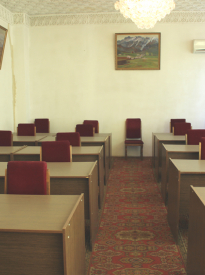Danish air force acquires two electric planes
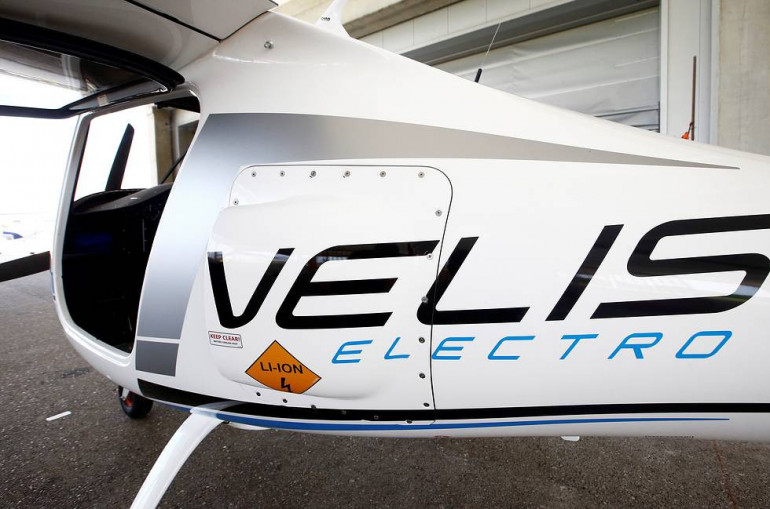 The two Velis Electro propeller-driven planes made by the Slovenian company Pipistrel will supplement existing training aircraft.
The two Velis Electro propeller-driven planes made by the Slovenian company Pipistrel will supplement existing training aircraft.
The Velis Electro is the only electric aircraft that has been certified or authorised to fly by the EU’s Aviation Safety Agency, EASA.
The Danish defence ministry announced in May a plan to reduce its emissions, but that has so far consisted largely of equipping buildings and ships with LED light bulbs and encouraging biodiversity on military bases.
The two electric aircraft will similarly only make a symbolic dent in the 42 million litres of fuel the Danish military consumes each year, emitting some 90,000 tonnes of CO2.
Israeli biotech company successfully tests COVID-19 drug
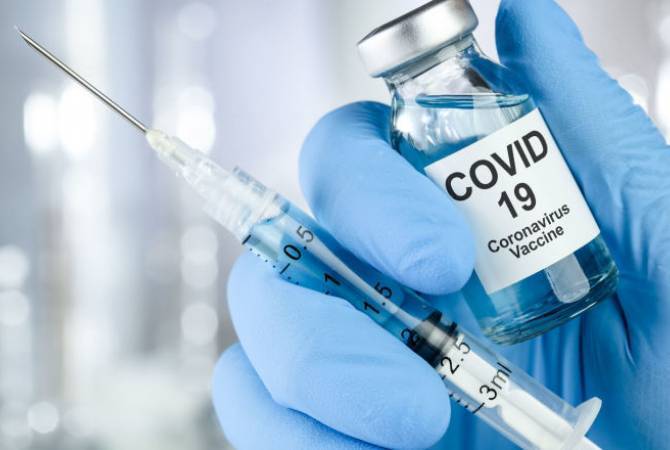 An Israeli biotech company has successfully completed trials of a new drug for novel coronavirus.
An Israeli biotech company has successfully completed trials of a new drug for novel coronavirus.
The drug, called MesenCure, was developed by Bonus BioGroup company, for the treatment of life-threatening respiratory distress in coronavirus and pneumonia patients.
The company recently conducted preclinical trials on model animals, showing that the animals' lungs became healthy after being treated with the drug.
The company now waits for governmental approval to conduct trials on coronavirus patients.
The new drug consists of stem cells taken from a healthy donor's fat tissue.
These cells, to be transmitted to the patient by blood transfusion, are supposed to reduce inflammation in the lung tissue and help restore the tissue.
In the experiment, the drug was able to reduce 47 percent of the fluid accumulated in the animals' lungs.
Australian scientists have discovered a “hellish” incandescent planet
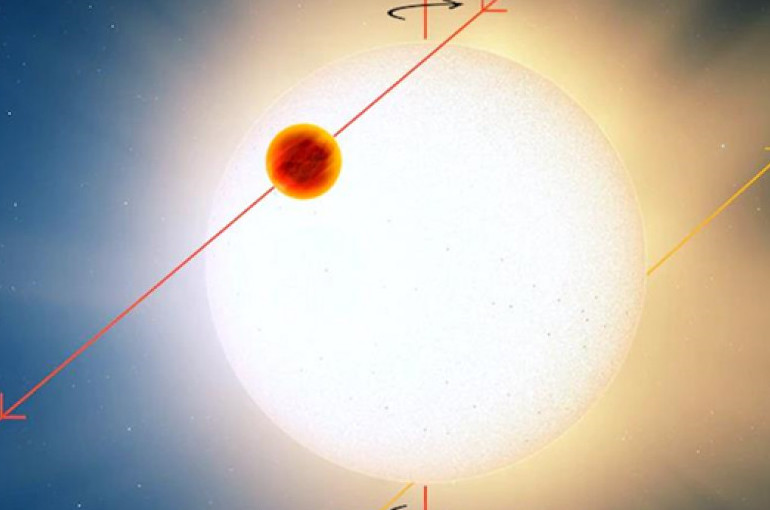 Astronomers from Queensland have discovered a new planet 490 light-years from Earth. It is one of the hottest ever recorded.
Astronomers from Queensland have discovered a new planet 490 light-years from Earth. It is one of the hottest ever recorded.
The planet was named TOI-1431b. The temperature on its daytime (that is, facing the star) side reaches 2700 degrees Celsius. This is enough to melt any metal. Heating on the shadow side is slightly lower – 2300 degrees.
Astrophysicist Dr. Brett Addison described the planet as a “hellish world.” According to him, not a single known form of life is able to survive in such conditions.
The planet belongs to the class of gas giants, it has a vast and deep atmosphere. It is about one and a half times the size of Jupiter and orbits a very hot star. The period of its full revolution is only two Earth days. It has a retrograde orbit, that is, it moves in the direction opposite to the rotation of the host star.
Scientists noted that research missions to such a planet are meaningless. But its discovery is important for science, as it helps to study the laws of other stellar systems. It is possible that a huge planet formed far from the star, and then migrated to it. By examining several of these bodies, scientists will be able to understand what causes such migrations. Earlier it was reported that scientists have found a planet covered in smog. It is located 41 light years from earth.
US start-up to manufacture «electric seaglider»
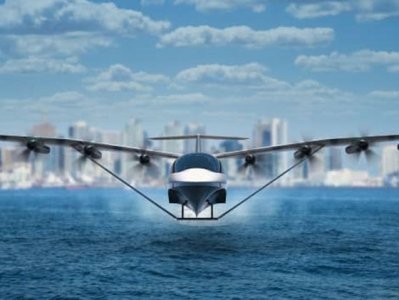 A Boston, USA, start-up called Regent wants to make flying ferries the best way to travel between coastal cities. The start-up is developing an «electric seaglider» that can motor out of a harbor on a hydrofoil, take off at a low speed using the water as a runway, then fly over the waves at a top speed of 180 miles per hour to bring passengers to their destinations, according to co-founders CEO Billy Thalheimer and CTO Michael Klinker.
A Boston, USA, start-up called Regent wants to make flying ferries the best way to travel between coastal cities. The start-up is developing an «electric seaglider» that can motor out of a harbor on a hydrofoil, take off at a low speed using the water as a runway, then fly over the waves at a top speed of 180 miles per hour to bring passengers to their destinations, according to co-founders CEO Billy Thalheimer and CTO Michael Klinker.
Thalheimer told CNBC that Regent wants to make trips between coastal cities fast, safe, affordable and reliable with the smallest possible environmental footprint.
Importantly, Regent is developing its seagliders to work with existing harbor infrastructure. The company will seek to establish passenger routes between major hubs like Boston and New York, Los Angeles and San Francisco, or shorter routes like New York City to the Hamptons or routes connecting the islands of Hawaii.
But for now, with $9 million in fresh seed funding in hand, the start-up is focusing on a prototype. The company is expecting to do its first flight in the Boston area.
Unlike prior generations in tech, Thalheimer says, working on a start-up that deals in atoms not just bits and bytes is easier than ever.
Elon Musk is donating a $100 million prize for carbon capture technology - here’s what that means
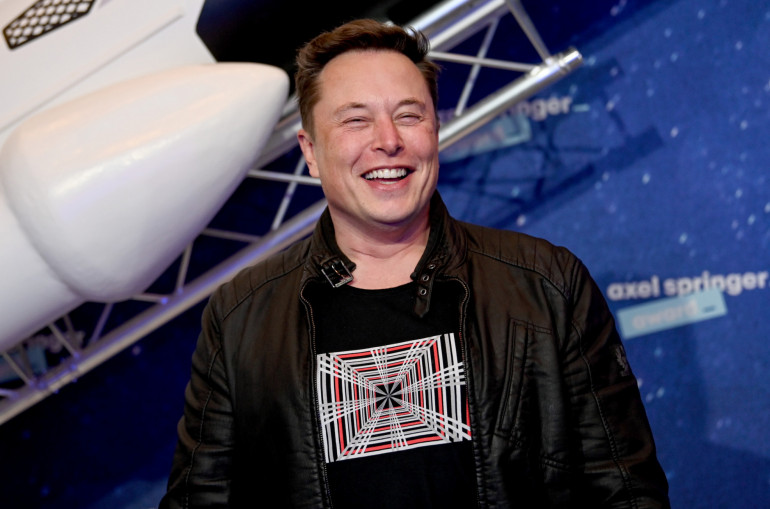 Tesla and SpaceX CEO Elon Musk is putting up $100 million for a new XPrize competition aimed at spurring the creation of new carbon removal technologies and helping to ease the climate crisis.
Tesla and SpaceX CEO Elon Musk is putting up $100 million for a new XPrize competition aimed at spurring the creation of new carbon removal technologies and helping to ease the climate crisis.
The prize will be the largest cash incentive in history, according to XPrize, a long-running organization that hosts competitions focused on spurring innovation in a variety of business sectors. Carbon removal refers to technologies that can extract carbon dioxide — a pollutant that is among the leading causes of climate change — from the atmosphere or ocean to mitigate the warming effect that copious amounts of CO2 emitted due to human activity are having on our planet.
The goal, according to XPrize, is to spur the invention of a "range of carbon removal solutions" in order to "address the biggest threat facing humanity — fighting climate change and rebalancing Earth's carbon cycle."
The competition will run for four years, and it asks contestants to propose, test and demonstrate technologies that could be used to extract carbon dioxide directly from the Earth's atmosphere or oceans.
Chinese scientists have created a smart window
 Scientists say that the new gadget will allow people to save on air conditioners, since the changing transparency of the window will provide a comfortable temperature in the room.
Scientists say that the new gadget will allow people to save on air conditioners, since the changing transparency of the window will provide a comfortable temperature in the room.
In China, scientists have invented a self-powered smart window. The device can be transparent or cloudy. And also capable of working without charging for several days. The most important function of a window is that it can change the light entering the room. Glass can block ultraviolet rays and infrared light by becoming opaque. Thus, it reduces the amount of sunlight. In addition, the gadget independently generates electricity through mechanical and radiant energy. The transparency of the window is changed at the touch of a button. The window is powered by a triboelectric nano-generator – TENG. Recall Samsung unveils smart window SunnySide, which looks like a regular window frame with glass, but in fact has an imitation of sunlight.
NASA's Ingenuity helicopter makes historic first flight on Mars
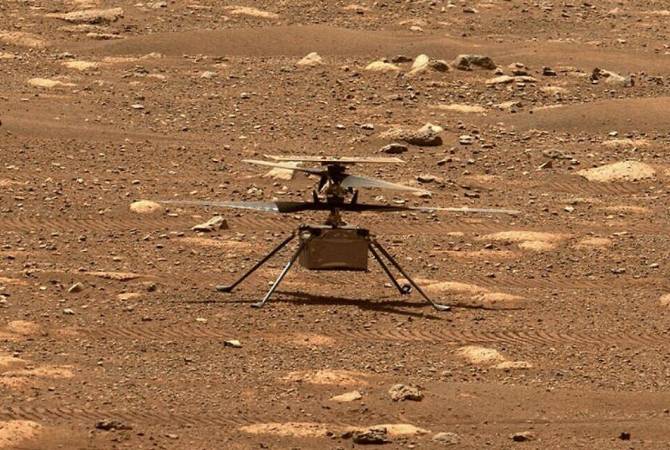 NASA's Ingenuity helicopter may have only been in the air for less than a minute, but it has gone down in history as the first aircraft to achieve powered flight on Mars.
NASA's Ingenuity helicopter may have only been in the air for less than a minute, but it has gone down in history as the first aircraft to achieve powered flight on Mars.
The NASA team watched at command headquarters as the first data, which included a grainy black and white image, confirmed the flight was successful. An image from the helicopter sent back to Earth showed the surface of Mars with a shadow of the aircraft. Just minutes later, video footage from the Perseverance rover, captured from its vantage point 65 metres away, showed the successful flight, which reached a height of approximately 3m.
More high-resolution images are expected over the next few days as all the data flows back to Earth. The Ingenuity helicopter was a last-minute addition to NASA's Perseverance rover, which landed on the Red Planet in February. Built over three years from high-tech and off-the-shelf components, the helicopter had a singular mission: to prove it could fly. Unlike drones on Earth, Ingenuity operates entirely autonomously based on a set of preprogrammed instructions and using its cameras and sensors to stay on track.
The first flight, which went exactly as planned, was a simple rise, hover roughly 30 seconds, turn and return to its landing spot. Over the next two weeks, Ingenuity will perform up to another four flights roughly every three Martian days. All going well, each flight will become increasingly ambitious. The next two flights will take the helicopter up to 5m above the surface and moving up to 15m forward and back to the landing area. The paths for flight four and five will depend upon these earlier flights.
The helicopter's mission will end at the end of April. As the helicopter falls silent, the rover will drive away and get ready to start the main mission: to hunt for evidence of past life on Mars.
Dino-killing asteroid gave rise to amazon rock forest
The asteroid impact that killed off the dinosaurs gave birth to our planet's tropical rainforests.
Researchers used fossil pollen and leaves from Colombia to investigate how the impact changed South American tropical forests. After the 12km-wide space rock struck Earth 66 million years ago, the type of vegetation that made up these forests changed drastically. The team has outlined its findings in the prestigious journal Science. They found that cone-bearing plants called conifers and ferns were common before the huge asteroid struck what is now the Yucatan Peninsula in Mexico.
WhatsApp launches important feature for Windows and Mac users
 Voice and video calls are now available for the desktop version of the WhatsApp messenger. WhatsApp PC voice and video calls work in both portrait and landscape orientations and appear on top of other open apps. WhatsApp has been testing this feature since the end of 2020. Currently, only calls between two users are available. Perhaps WhatsApp will expand its functionality to include group voice and video calls in the future.
Voice and video calls are now available for the desktop version of the WhatsApp messenger. WhatsApp PC voice and video calls work in both portrait and landscape orientations and appear on top of other open apps. WhatsApp has been testing this feature since the end of 2020. Currently, only calls between two users are available. Perhaps WhatsApp will expand its functionality to include group voice and video calls in the future.
Carbon uptake in regrowing Amazon forest threatened by climate and humans
 Large areas of forests regrowing in the Amazon to help reduce carbon dioxide in the atmosphere are being limited by climate and human activity.The forests, which naturally regrow on land previously deforested for agriculture and now abandoned, are developing at different speeds. Researchers at the University of Bristol have found a link between slower tree growth and land previously scorched by fire.Global forests are expected to contribute a quarter of pledged mitigation under the 2015 Paris Agreement. Many countries pledged in their Nationally Determined Contribution (NDC) to restore and reforest millions of hectares of land to help achieve the goals of the Paris Agreement. Until recently, this included Brazil, which in 2015 vowed to restore and reforest 12 million hectares, an area approximately equal to that of England.
Large areas of forests regrowing in the Amazon to help reduce carbon dioxide in the atmosphere are being limited by climate and human activity.The forests, which naturally regrow on land previously deforested for agriculture and now abandoned, are developing at different speeds. Researchers at the University of Bristol have found a link between slower tree growth and land previously scorched by fire.Global forests are expected to contribute a quarter of pledged mitigation under the 2015 Paris Agreement. Many countries pledged in their Nationally Determined Contribution (NDC) to restore and reforest millions of hectares of land to help achieve the goals of the Paris Agreement. Until recently, this included Brazil, which in 2015 vowed to restore and reforest 12 million hectares, an area approximately equal to that of England.
Part of this reforestation can be achieved through the natural regrowth of secondary forests, which already occupy about 20 per cent of deforested land in the Amazon. Understanding how the regrowth is affected by the environment and humans will improve estimates of the climate mitigation potential in the decade ahead that the United Nations has called the ‘Decade of Ecosystem Restoration’.
Tropical secondary forests, which are growing on used land, can absorb carbon up to 11 times faster than old-growth forests. However, there are many driving factors that can influence the spatial patterns of regrowth rate, such as when forest land is burned either to clear for agriculture or when fire elsewhere has spread.
The research was led by researchers at the University of Bristol and Brazil’s National Institute for Space Research and included scientists from the Universities of Cardiff and Exeter, UK. They conclude that there is a need for better protection of secondary forests if they are to help mitigate the effects of climate change.
Scientists used a combination of satellite-derived images that detect changes in forest cover over time to identify secondary forest areas and their ages as well as satellite data that can monitor the above-ground carbon, environmental factors and human activity.They found that the impact of disturbances such as fire and repeated deforestations prior to regrowth reduced the regrowth rate by 20 per cent to approximately 55 per cent across different areas of the Amazon.
The research team also calculated the contribution of Amazonian secondary forests to Brazil’s net emissions reduction target and found that by preserving the current area, secondary forests can contribute up to 6 per cent of Brazil’s net emissions reduction targets. However, this value reduces rapidly to less than 1 per cent if only secondary forests older than 20 years are preserved.
The team will now focus their next steps on applying their methods to estimate the regrowth of secondary forest across the tropics.
Teardown: Apple AirPods Max headphones
 Yet Apple has launched its AirPods Max, its first non-Beats over-ear headphones, at a challenging time.
Yet Apple has launched its AirPods Max, its first non-Beats over-ear headphones, at a challenging time.
It has an aluminium-led industrial design that discreetly bellows ‘quality’, a thoughtful interior layout, and a range of audio features that fully exercise Apple’s dedicated H1 headphone ASIC.
Yet right now there is reduced demand for high-comfort, noise-cancelling headphones from one key market: the frequent traveller. Moreover, numerous reviewers have found that the AirPods Max feel tied to an ecosystem where the best available audio quality from Apple Music is 256kbps AAC compression as opposed to the lossless option aficionados tend to prefer.
There are even areas where it feels Apple has been rather mean. There is no 3.5mm jack nor any adapter bundled with the headphones. Instead, the user must pay an extra £35 for a Lightning-to-audio cable. Then, the Max’s case has drawn fire partly from the bemused because it looks like a bra but mostly because it does not fully cover – and thereby fully protect – such an expensive product.
Finally here, if the battery does drain completely there is no passive mode (though with 20-hour capacity, a 15-minute fast charge providing an hour’s play, and an ultra-low-power standby mode, that is hard to achieve).
Nevertheless, audiophiles can be forgiving if the product delivers results in terms of sound and, for headphones, comfort. In its full active noise-cancelling mode and a separate ‘transparency’ mode (which lets some outside noise through), eight on-board microphones feed into a system that can optimise output hundreds of times a second – six capture the surroundings and two what the user is hearing. Processing is done via ten audio cores in two on-board H1s, one in each cup.
A spatial audio feature can then be used for video offering a well-rated conversion of Dolby 5.1, 7.1 and Atmos soundtracks into a three-dimensional rather than solely horizontal spread.
Performance is also highly rated across the full dynamic range with any of these features – or a further Adaptive EQ – turned off. The sound itself is delivered by two 40mm Apple-designed dynamic drivers.
The Max weighs roughly 100g more than premium rivals at 384.8g. Apple has sought to mitigate wearer fatigue by giving the canopy a lightweight stainless-steel frame and a breathable knitted mesh headband as well as balancing weight across the two cups.
An iFixit teardown highlights the canopy design. “Any capable headphone headband has to tilt, spin, and connect the ear cups together, but no other headphone does it quite like this. Apple’s electromechanical hinge hardware is both intricate and overbuilt and might make the AirPods Max’s price tag a little easier to swallow.
As its teardown team explains, these things do matter: “The two points in any headphone where the headband meets the ear cup are paramount for comfort. The joint needs to move with multiple degrees of freedom to sit comfortably on the wearer’s head, and be sturdy enough to be yanked around a bit during the putting-on and resizing process.
Meanwhile, though not signalled in the marketing, Apple has included a further feature that allows a user (or, more likely for now, a repair engineer) to insert a SIM pin into a small hole and detach the canopy.After so many earbud teardowns where partial replaceability and repairability have been disregarded, Air Pods Max reverses the trend.You cannot get away from the fact that the AirPods Max are on every level a beautifully designed product (once out of the case).
British Army chief: A quarter of soldiers could be robots by 2030
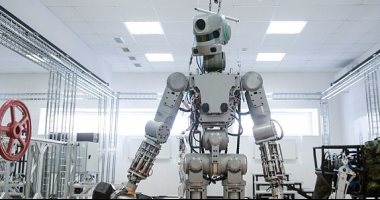 The head of the UK’s military has said that he expects up to a quarter of soldiers could be robots by the 2030s.
The head of the UK’s military has said that he expects up to a quarter of soldiers could be robots by the 2030s.
Sir Nick Carter – a decorated general with service in Bosnia, Kosovo, Afghanistan, and Basra – made the comments to Sky News on Sunday.
“I suspect we could have an army of 120,000, of which 30,000 might be robots,” Sir Nick said.
In a paper called The Internet of Battle Things – published by the US Army Research Laboratory in 2016 – the authors envision future battlefields consisting almost entirely of robots.
Reconnaissance drones in similar size and capability of dragonflies would enter buildings to scout for the enemy. Larger armed drones and other automated weapons systems would then be called in to do the fighting.
“If I projected forward another 10 years, I think we should be in no doubt that warfare will look different, there will be robots on our battlefield in future — there already are today,” Carter said in a later interview on the BBC’s Andrew Marr Show.
Countries around the world have increased their research on military robots-from unmanned submarines, to autonomous soldiers like «Ivan the Terminator».
T Experts have called for international laws and norms to be established which could help to prevent accidents from occurring with potentially devastating consequences.
“The challenge for us is the threat is evolving the whole time, the threat is modernising in certain quarters and we need to modernise as well, so for us it is a challenge,” said Carter.
One of the leading calls is for a human to always make the final decision, especially for kill orders. An automated system can make a suggestion, but for accountability and safeguard purposes a human should make the judgement whether it’s the right course of action.
With the likening of the rush to militarise AI and robotics to the nuclear arms race, it’s worth remembering the story of Soviet Air Defence Force Officer Stanislav Petrov.
In 1983, Petrov’s early-warning system reported the launch of five intercontinental ballistic missiles from the US. Petrov used his human instinct to correctly determine there was an error with the system and not to retaliate-something which would have sent the world into full-scale nuclear war.
Left to a system’s judgement alone, the world would be a very different place today. Billions would have died and large parts of the Earth left uninhabitable. We should perhaps remind ourselves of that when militarising new technologies.
The rush to weaponise AI and robotics has been likened to the nuclear arms race.
The Future of Cybersecurity in 2021 and Beyond
 Cyberattacks are absolutely on the rise. Based on everything we know and every single analyst we have spoken with, there is no doubt that attacks are increasing.
Cyberattacks are absolutely on the rise. Based on everything we know and every single analyst we have spoken with, there is no doubt that attacks are increasing.
Cybersecurity experts predict that in 2021 there will be a cyberattack incident every 11 seconds. This is nearly twice what it was in 2019 (every 19 seconds), and four times the rate five years ago (every 40 seconds in 2016)," he told TechNewsWorld.
The rapidly growing increase in cyberattacks worldwide comes at a hefty cost for businesses in order to better protect their computer networks from intrusions. Cyberattacks not only are increasing in frequency, but they are costing victims larger financial losses.
Young Entrepreneurs Bring High Tech to Quell Surgical Fears
 The last thing George Kramb expected from years of walking surgeons through actual operations using medical machinery was to step into a role that helped guide patients worldwide through their own medical journeys.
The last thing George Kramb expected from years of walking surgeons through actual operations using medical machinery was to step into a role that helped guide patients worldwide through their own medical journeys.
Kramb (above, pictured left) and his partner, Patrick Frank, are listed on the "2021 Forbes 30 Under 30" list in recognition of their status as rising stars in the business world for their efforts in cofounding Rightdevice. Every year, Forbes recognizes young entrepreneurs, activists, scientists and entertainers forKramb and Frank used their years of experience in medical technology and patient care to develop a way to turn the daunting surgical process into a positive and comforting experience.
Rightdevice connects patients through relatable experiences. It'sPatientPartner program is the first service that connects pre-surgical patients directly with fully recovered patients who went through the same surgery, often with the same surgeon.
Though far from doctors themselves, Rightdevice's cofounders are on calls every day with patients, patient partners, surgeons, and representatives from the healthcare industry.
Scientists read a 300-year-old letter without opening it
A virtual unfolding technique allows researchers to look inside intricately folded historical letters without potentially damaging them.
The contents of a handwritten European letter sealed for 300 years are no longer a secret, thanks to a technique that let scholars peek inside virtually without damaging the intricately folded historical document.
In the letter, dated July 31, 1697, Jacques Sennacques asks his cousin Pierre Le Pers, a French merchant in The Hague, for a certified copy of a death notice for Daniel Le Pers. That's no history-making revelation, but the technique that revealed the request could hold promise for unlocking sealed correspondence containing historical gems across time and place.
Keyless elevators installed in Japan
 Japanese Hitachi Ltd. and Mitsubishi Electric companies have introduced elevator models that do not require the use of keys to operate, which will help reduce the risk of coronavirus infection.
Japanese Hitachi Ltd. and Mitsubishi Electric companies have introduced elevator models that do not require the use of keys to operate, which will help reduce the risk of coronavirus infection.
In the case of the Hitachi brand version, the passenger can use the elevator with the help of the LINE application for instant messaging or by scanning a special QR code installed in the elevator car. The driver selects the floor in his personal smartphone that does not need to touch a key.
Mitsubishi Electric, in turn, has introduced an elevator, which can be automatically called to take it to the necessary floor, if the information about the latter is included in the plan in advance. This is also done with the help of a special application for smartphones.
Armenian-Russian scientists develop "smart sight" system for satellites and UAVs
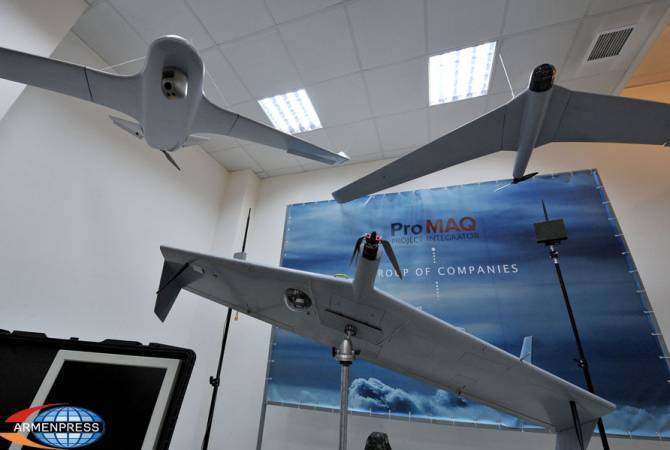 Thanks to the developments by Armenian and Russian scientists, "smart sight" system for satellites and UAVs has become available. Scientists say that this system will facilitate the introduction of hyperspectral technology.
Thanks to the developments by Armenian and Russian scientists, "smart sight" system for satellites and UAVs has become available. Scientists say that this system will facilitate the introduction of hyperspectral technology.
Laser projection screen (HUD)
 Advanced laser technology, additional screen designed to express useful information directly on the windshield for more convenient viewing.
Advanced laser technology, additional screen designed to express useful information directly on the windshield for more convenient viewing.
Cacao is useful for brain
 A diet enriched with caco flavanols may help improve memory, but the benefits of supplementation are limited and generaly do not improve brain health. The true benefits of cacao and chocolate are revealed. Specialists of Columbia and New York university recruited 211 healty people aged 50 uo to 75 for a study that lasted 12 weeks. They first performed a series of tests to assess thinking and memory and subgroup and volunteers had MRT scan to measure blood flow in brain. The participants were divided into four groups based on the amount of supplements they received. The first group was the control group and received a platsebo, the second received 260mlg of flavanol a per day, the third and the fourth correspondently 510-570 mlg of flavanol. At the end of the study the researchers found out that those on high-flavanol diet performed better memory than the other groups, they found no relationaship between supplement intake and the two cognitive tests. There was also no effect of flavanols on the blood flow in the brain. Although cacao bleans are used to make chocolates, but the chocolate is not a reliabler source of flavanol compounds and the test results do not suggest that eating chocolate is beneficial for cognitive health.
A diet enriched with caco flavanols may help improve memory, but the benefits of supplementation are limited and generaly do not improve brain health. The true benefits of cacao and chocolate are revealed. Specialists of Columbia and New York university recruited 211 healty people aged 50 uo to 75 for a study that lasted 12 weeks. They first performed a series of tests to assess thinking and memory and subgroup and volunteers had MRT scan to measure blood flow in brain. The participants were divided into four groups based on the amount of supplements they received. The first group was the control group and received a platsebo, the second received 260mlg of flavanol a per day, the third and the fourth correspondently 510-570 mlg of flavanol. At the end of the study the researchers found out that those on high-flavanol diet performed better memory than the other groups, they found no relationaship between supplement intake and the two cognitive tests. There was also no effect of flavanols on the blood flow in the brain. Although cacao bleans are used to make chocolates, but the chocolate is not a reliabler source of flavanol compounds and the test results do not suggest that eating chocolate is beneficial for cognitive health.
Work Anywhere With The Nissan NV350 Caravan Office Pod Concept
 Working from your car has never sounded so liberating thanks Nissan’s latest concept. Based on the NV350 Caravan, the “Office Pod” is the perfect business camper for the pandemic.
Working from your car has never sounded so liberating thanks Nissan’s latest concept. Based on the NV350 Caravan, the “Office Pod” is the perfect business camper for the pandemic.
Sick of working in your cramped office, hunched over a desk, sat on a kitchen chair? Miss your commute? Tired of the view at home? These problems and more can be solved by the Office Pod, unveiled ahead of the virtual 2021 Tokyo Auto Salon.
The interior has a desk and office chair that both slide out of the rear of the vehicle. These are finished in a very modern and officey white and they slide out under the hatch to provide more room inside the NV350 Caravan, as well as a (hopefully) lovely view outside.
With a couple of steps that can be placed next to the sliding door, getting in and out of the Office Pod is easy. It also looks like there’s a kettle for tea or coffee, which – is it really an office if it doesn’t have coffee-making facilities?
Samsung appears to have a new Tile competitor on the way
 Samsung seems to be close to launching a new Tile-like device for tracking lost items. The tracker, likely called the Galaxy SmartTag. The Galaxy SmartTag would use Bluetooth to connect with nearby devices and broadcast its location, so owners could find it later if they misplace whatever it’s attached to.
Samsung seems to be close to launching a new Tile-like device for tracking lost items. The tracker, likely called the Galaxy SmartTag. The Galaxy SmartTag would use Bluetooth to connect with nearby devices and broadcast its location, so owners could find it later if they misplace whatever it’s attached to.
Samsung’s tracker sounds a lot like a Tile, and it’ll apparently look a lot like one, too. Leaks show the SmartTag as a small square with rounded corners and a hole at one edge for slipping a keychain or lanyard through. Photos of the device filed with Taiwan’s telecom regulator were publicized by 91mobiles, and they line up with an illustration of the gadget that was leaked from Samsung’s SmartThings app. So far, it’s not clear that Samsung is doing anything out of the ordinary here — this seems to be a pretty standard fare item tracker.
10 Breakthrough Technologies 2020
https://www.technologyreview.com/10-breakthrough-technologies/2020/#Echobox=1582731878
Unhackable internet
https://wp.technologyreview.com/wp-content/uploads/2020/02/quantum-internet-a-2_1-1.mp4
o Why it matters
The internet is increasingly vulnerable to hacking; a quantum one would be unhackable.
o Key players
Delft University of Technology, Quantum Internet Alliance, University of Science and Technology of China
o Availability
5 years
Later this year, Dutch researchers will complete a quantum internet between Delft and the Hague.
 An internet based on quantum physics will soon enable inherently secure communication. A team led by Stephanie Wehner, at Delft University of Technology, is building a network connecting four cities in the Netherlands entirely by means of quantum technology. Messages sent over this network will be unhackable.
An internet based on quantum physics will soon enable inherently secure communication. A team led by Stephanie Wehner, at Delft University of Technology, is building a network connecting four cities in the Netherlands entirely by means of quantum technology. Messages sent over this network will be unhackable.
In the last few years, scientists have learned to transmit pairs of photons across fiber-optic cables in a way that absolutely protects the information encoded in them. A team in China used a form of the technology to construct a 2,000-kilometer network backbone between Beijing and Shanghai-but that project relies partly on classical components that periodically break the quantum link before establishing a new one, introducing the risk of hacking.
The Delft network, in contrast, will be the first to transmit information between cities using quantum techniques from end to end.
The technology relies on a quantum behavior of atomic particles called entanglement. Entangled photons can’t be covertly read without disrupting their content.
But entangled particles are difficult to create, and harder still to transmit over long distances. Wehner’s team has demonstrated it can send them more than 1.5 kilometers (0.93 miles), and they are confident they can set up a quantum link between Delft and the Hague by around the end of this year. Ensuring an unbroken connection over greater distances will require quantum repeaters that extend the network.
Such repeaters are currently in design at Delft and elsewhere. The first should be completed in the next five to six years, says Wehner, with a global quantum network following by the end of the decade.
Hyper-personalized medicine
o Why it matters
Genetic medicine tailored to a single patient means hope for people whose ailments were previously uncurable.
o Key players
A-T Children’s Project, Boston Children’s Hospital, Ionis Pharmaceuticals, US Food & Drug Administration
o Availability
Now
Novel drugs are being designed to treat unique genetic mutations.
 Here’s a definition of a hopeless case: a child with a fatal disease so exceedingly rare that not only is there no treatment, there’s not even anyone in a lab coat studying it. “Too rare to care,” goes the saying.
Here’s a definition of a hopeless case: a child with a fatal disease so exceedingly rare that not only is there no treatment, there’s not even anyone in a lab coat studying it. “Too rare to care,” goes the saying.
That’s about to change, thanks to new classes of drugs that can be tailored to a person’s genes. If an extremely rare disease is caused by a specific DNA mistake-as several thousand are-there’s now at least a fighting chance for a genetic fix.
One such case is that of Mila Makovec, a little girl suffering from a devastating illness caused by a unique genetic mutation, who got a drug manufactured just for her. Her case made the New England Journal of Medicine in October, after doctors moved from a readout of her genetic error to a treatment in just a year. They called the drug milasen, after her.
The treatment hasn’t cured Mila. But it seems to have stabilized her condition: it has reduced her seizures, and she has begun to stand and walk with assistance.
Mila’s treatment was possible because creating a gene medicine has never been faster or had a better chance of working. The new medicines might take the form of gene replacement, gene editing, or antisense (the type Mila received), a sort of molecular eraser, which erases or fixes erroneous genetic messages. What the treatments have in common is that they can be programmed, in digital fashion and with digital speed, to correct or compensate for inherited diseases, letter for DNA letter.
How many stories like Mila’s are there? So far, just a handful.
But more are on the way. Where researchers would have once seen obstacles and said “I’m sorry,” they now see solutions in DNA and think maybe they can help.
The real challenge for “n-of-1” treatments (a reference to the number of people who get the drug) is that they defy just about every accepted notion of how pharmaceuticals should be developed, tested, and sold. Who will pay for these drugs when they help one person, but still take large teams to design and manufacture?
Digital money
The rise of digital currency has massive ramifications for financial privacy.
o Why it matters
As the use of physical cash declines, so does the freedom to transact without an intermediary. Meanwhile, digital currency technology could be used to splinter the global financial system.
o Key players
People’s Bank of China, Facebook
o Availability
This year
 Last June Facebook unveiled a “global digital currency” called Libra. The idea triggered a backlash and Libra may never launch, at least not in the way it was originally envisioned. But it’s still made a difference: just days after Facebook’s announcement, an official from the People’s Bank of China implied that it would speed the development of its own digital currency in response. Now China is poised to become the first major economy to issue a digital version of its money, which it intends as a replacement for physical cash.
Last June Facebook unveiled a “global digital currency” called Libra. The idea triggered a backlash and Libra may never launch, at least not in the way it was originally envisioned. But it’s still made a difference: just days after Facebook’s announcement, an official from the People’s Bank of China implied that it would speed the development of its own digital currency in response. Now China is poised to become the first major economy to issue a digital version of its money, which it intends as a replacement for physical cash.
China’s leaders apparently see Libra, meant to be backed by a reserve that will be mostly US dollars, as a threat: it could reinforce America’s disproportionate power over the global financial system, which stems from the dollar’s role as the world’s de facto reserve currency. Some suspect China intends to promote its digital renminbi internationally.
Now Facebook’s Libra pitch has become geopolitical. In October, CEO Mark Zuckerberg promised Congress that Libra “will extend America’s financial leadership as well as our democratic values and oversight around the world.” The digital money wars have begun.
Anti-aging drugs
https://wp.technologyreview.com/wp-content/uploads/2020/02/anti-aging-drugs-a-2_0-1.mp4
o Why it matters
A number of different diseases, including cancer, heart disease, and dementia, could potentially be treated by slowing aging.
o Key players
Unity Biotechnology, Alkahest, Mayo Clinic, Oisín Biotechnologies, Siwa Therapeutics
o Availability
Less than 5 years
 Drugs that try to treat ailments by targeting a natural aging process in the body have shown promise.
Drugs that try to treat ailments by targeting a natural aging process in the body have shown promise.
The first wave of a new class of anti-aging drugs have begun human testing. These drugs won’t let you live longer (yet) but aim to treat specific ailments by slowing or reversing a fundamental process of aging.
The drugs are called senolytics-they work by removing certain cells that accumulate as we age. Known as “senescent” cells, they can create low-level inflammation that suppresses normal mechanisms of cellular repair and creates a toxic environment for neighboring cells.
In June, San Francisco–based Unity Biotechnology reported initial results in patients with mild to severe osteoarthritis of the knee. Results from a larger clinical trial are expected in the second half of 2020. The company is also developing similar drugs to treat age-related diseases of the eyes and lungs, among other conditions.
Senolytics are now in human tests, along with a number of other promising approaches targeting the biological processes that lie at the root of aging and various diseases.
A company called Alkahest injects patients with components found in young people’s blood and says it hopes to halt cognitive and functional decline in patients suffering from mild to moderate Alzheimer’s disease. The company also has drugs for Parkinson’s and dementia in human testing.
And in December, researchers at Drexel University College of Medicine even tried to see if a cream including the immune-suppressing drug rapamycin could slow aging in human skin.
The tests reflect researchers’ expanding efforts to learn if the many diseases associated with getting older—such as heart diseases, arthritis, cancer, and dementia-can be hacked to delay their onset.
AI-discovered molecules
Scientists have used AI to discover promising drug-like compounds.
o Why it matters
Commercializing a new drug costs around $2.5 billion on average. One reason is the difficulty of finding promising molecules.
o Key players
Insilico Medicine, Kebotix, Atomwise, University of Toronto, BenevolentAI, Vector Institute
o Availability
3-5 years
 The universe of molecules that could be turned into potentially life-saving drugs is mind-boggling in size: researchers estimate the number at around 1060. That’s more than all the atoms in the solar system, offering virtually unlimited chemical possibilities-if only chemists could find the worthwhile ones.
The universe of molecules that could be turned into potentially life-saving drugs is mind-boggling in size: researchers estimate the number at around 1060. That’s more than all the atoms in the solar system, offering virtually unlimited chemical possibilities-if only chemists could find the worthwhile ones.
Now machine-learning tools can explore large databases of existing molecules and their properties, using the information to generate new possibilities. This could make it faster and cheaper to discover new drug candidates.
In September, a team of researchers at Hong Kong–based Insilico Medicine and the University of Toronto took a convincing step toward showing that the strategy works by synthesizing several drug candidates found by AI algorithms.
Using techniques like deep learning and generative models similar to the ones that allowed a computer to beat the world champion at the ancient game of Go, the researchers identified some 30,000 novel molecules with desirable properties. They selected six to synthesize and test. One was particularly active and proved promising in animal tests.
Chemists in drug discovery often dream up new molecules-an art honed by years of experience and, among the best drug hunters, by a keen intuition. Now these scientists have a new tool to expand their imaginations.
Satellite mega-constellations
o Why it matters
These systems can blanket the globe with high-speed internet—or turn Earth’s orbit into a junk-ridden minefield.
o Key players
SpaceX, OneWeb, Amazon, Telesat
o Availability
Now
 We can now affordably build, launch, and operate tens of thousands of satellites in orbit at once.
We can now affordably build, launch, and operate tens of thousands of satellites in orbit at once.
Satellites that can beam a broadband connection to internet terminals. As long as these terminals have a clear view of the sky, they can deliver internet to any nearby devices. SpaceX alone wants to send more than 4.5 times more satellites into orbit this decade than humans have ever launched since Sputnik.
These mega-constellations are feasible because we have learned how to build smaller satellites and launch them more cheaply. During the space shuttle era, launching a satellite into space cost roughly $24,800 per pound. A small communications satellite that weighed four tons cost nearly $200 million to fly up.
Today a SpaceX Starlink satellite weighs about 500 pounds (227 kilograms). Reusable architecture and cheaper manufacturing mean we can strap dozens of them onto rockets to greatly lower the cost; a SpaceX Falcon 9 launch today costs about $1,240 per pound.
The first 120 Starlink satellites went up last year, and the company planned to launch batches of 60 every two weeks starting in January 2020. OneWeb will launch over 30 satellites later this year. We could soon see thousands of satellites working in tandem to supply internet access for even the poorest and most remote populations on the planet.
But that’s only if things work out. Some researchers are livid because they fear these objects will disrupt astronomy research. Worse is the prospect of a collision that could cascade into a catastrophe of millions of pieces of space debris, making satellite services and future space exploration next to impossible. Starlink’s near-miss with an ESA weather satellite in September was a jolting reminder that the world is woefully unprepared to manage this much orbital traffic. What happens with these mega-constellations this decade will define the future of orbital space.
Quantum supremacy
https://wp.technologyreview.com/wp-content/uploads/2020/02/quantum-supremacy-a-2_1-1.mp4
o Why it matters
Eventually, quantum computers will be able to solve problems no classical machine can manage.
o Key players
Google, IBM, Microsoft, Rigetti, D-Wave, IonQ, Zapata Computing, Quantum Circuits
o Availability
5-10+ years
 Google has provided the first clear proof of a quantum computer outperforming a classical one.
Google has provided the first clear proof of a quantum computer outperforming a classical one.
Quantum computers store and process data in a way completely differently from the ones we’re all used to. In theory, they could tackle certain classes of problems that even the most powerful classical supercomputer imaginable would take millennia to solve, like breaking today’s cryptographic codes or simulating the precise behavior of molecules to help discover new drugs and materials.
There have been working quantum computers for several years, but it’s only under certain conditions that they outperform classical ones, and in October Google claimed the first such demonstration of “quantum supremacy.” A computer with 53 qubits—the basic unit of quantum computation—did a calculation in a little over three minutes that, by Google’s reckoning, would have taken the world’s biggest supercomputer 10,000 years, or 1.5 billion times as long. IBM challenged Google’s claim, saying the speedup would be a thousandfold at best; even so, it was a milestone, and each additional qubit will make the computer twice as fast.
However, Google’s demo was strictly a proof of concept—the equivalent of doing random sums on a calculator and showing that the answers are right. The goal now is to build machines with enough qubits to solve useful problems. This is a formidable challenge: the more qubits you have, the harder it is to maintain their delicate quantum state. Google’s engineers believe the approach they’re using can get them to somewhere between 100 and 1,000 qubits, which may be enough to do something useful—but nobody is quite sure what.
And beyond that? Machines that can crack today’s cryptography will require millions of qubits; it will probably take decades to get there. But one that can model molecules should be easier to build.
Tiny AI
We can now run powerful AI algorithms on our phones.
o Why it matters
Our devices no longer need to talk to the cloud for us to benefit from the latest AI-driven features.
o Key players
Google, IBM, Apple, Amazon
o Availability
Now
 AI has a problem: in the quest to build more powerful algorithms, researchers are using ever greater amounts of data and computing power, and relying on centralized cloud services. This not only generates alarming amounts of carbon emissions but also limits the speed and privacy of AI applications.
AI has a problem: in the quest to build more powerful algorithms, researchers are using ever greater amounts of data and computing power, and relying on centralized cloud services. This not only generates alarming amounts of carbon emissions but also limits the speed and privacy of AI applications.
But a countertrend of tiny AI is changing that. Tech giants and academic researchers are working on new algorithms to shrink existing deep-learning models without losing their capabilities. Meanwhile, an emerging generation of specialized AI chips promises to pack more computational power into tighter physical spaces, and train and run AI on far less energy.
These advances are just starting to become available to consumers. Last May, Google announced that it can now run Google Assistant on users’ phones without sending requests to a remote server. As of iOS 13, Apple runs Siri’s speech recognition capabilities and its QuickType keyboard locally on the iPhone. IBM and Amazon now also offer developer platforms for making and deploying tiny AI.
All this could bring about many benefits. Existing services like voice assistants, autocorrect, and digital cameras will get better and faster without having to ping the cloud every time they need access to a deep-learning model. Tiny AI will also make new applications possible, like mobile-based medical-image analysis or self-driving cars with faster reaction times. Finally, localized AI is better for privacy, since your data no longer needs to leave your device to improve a service or a feature.
But as the benefits of AI become distributed, so will all its challenges. It could become harder to combat surveillance systems or deepfake videos, for example, and discriminatory algorithms could also proliferate. Researchers, engineers, and policymakers need to work together now to develop technical and policy checks on these potential harms.
Differential privacy
A technique to measure the privacy of a crucial data set.
o Why it matters
It is increasingly difficult for the US Census Bureau to keep the data it collects private. A technique called differential privacy could solve that problem, build trust, and also become a model for other countries.
o Key players
US Census Bureau, Apple, Facebook
o Availability
 Its use in the 2020 US Census will be the biggest-scale application yet.
Its use in the 2020 US Census will be the biggest-scale application yet.
In 2020, the US government has a big task: collect data on the country’s 330 million residents while keeping their identities private. The data is released in statistical tables that policymakers and academics analyze when writing legislation or conducting research. By law, the Census Bureau must make sure that it can’t lead back to any individuals.
But there are tricks to “de-anonymize” individuals, especially if the census data is combined with other public statistics.
So the Census Bureau injects inaccuracies, or “noise,” into the data. It might make some people younger and others older, or label some white people as black and vice versa, while keeping the totals of each age or ethnic group the same. The more noise you inject, the harder de-anonymization becomes.
Differential privacy is a mathematical technique that makes this process rigorous by measuring how much privacy increases when noise is added. The method is already used by Apple and Facebook to collect aggregate data without identifying particular users.
But too much noise can render the data useless. One analysis showed that a differentially private version of the 2010 Census included households that supposedly had 90 people.
If all goes well, the method will likely be used by other federal agencies. Countries like Canada and the UK are watching too.
Climate change attribution
https://wp.technologyreview.com/wp-content/uploads/2020/02/climate-change-attribution-a-2_1-1.mp4
o Why it matters
It’s providing a clearer sense of how climate change is worsening the weather, and what we’ll need to do to prepare.
o Key players
World Weather Attribution, Royal Netherlands Meteorological Institute, Red Cross Red Crescent Climate Centre, University of Oxford
o Availability
Now
 Researchers can now spot climate change’s role in extreme weather.
Researchers can now spot climate change’s role in extreme weather.
Ten days after Tropical Storm Imelda began flooding neighborhoods across the Houston area last September, a rapid-response research team announced that climate change almost certainly played a role.
The group, World Weather Attribution, had compared high-resolution computer simulations of worlds where climate change did and didn’t occur. In the former, the world we live in, the severe storm was as much as 2.6 times more likely—and up to 28% more intense.
Earlier this decade, scientists were reluctant to link any specific event to climate change. But many more extreme-weather attribution studies have been done in the last few years, and rapidly improving tools and techniques have made them more reliable and convincing.
This has been made possible by a combination of advances. For one, the lengthening record of detailed satellite data is helping us understand natural systems. Also, increased computing power means scientists can create higher-resolution simulations and conduct many more virtual experiments.
These and other improvements have allowed scientists to state with increasing statistical certainty that yes, global warming is often fueling more dangerous weather events.
By disentangling the role of climate change from other factors, the studies are telling us what kinds of risks we need to prepare for, including how much flooding to expect and how severe heat waves will get as global warming becomes worse. If we choose to listen, they can help us understand how to rebuild our cities and infrastructure for a climate-changed world.
Can we rely on machine intelligence to fix our climate?
 As more and more industries take on artificial intelligence to solve some of their biggest challenges, can machines help us understand and fix climate change issues?
As more and more industries take on artificial intelligence to solve some of their biggest challenges, can machines help us understand and fix climate change issues?
So your phone recognises your face, and your bank can block any transaction unlike your spending habits. And your online supermarket nudges you with their vegan products just because you’ve bought that oat milk once, while your online movie platform keeps throwing B-movies at you after you watched that soap opera last month.
A growing number of our devices and services are relying on artificial intelligence (AI), a technology that continues to branch out and pop up in more and more areas of our lives. Scientists, entrepreneurs, and governments are leveraging AI to explore solutions for some of society’s biggest challenges. Untangling how the Earth’s climate behaves and how it might evolve in the future is high on the agenda. But while technology is helping us make more sense of the huge amount of data out there, how can its intelligence help us practically mitigate environmental changes and adapt to the future?
“When people say "AI" they often mean machine learning (ML), which is a set of algorithms that can learn from data,” says Dr. David Rolnick, assistant professor at the University of Pennsylvania. “AI is generally not going to do something better than a human, but it will generally be much faster, and it will be able to pick out patterns from really large amounts of data.” And it’s this ability to process very fast huge amounts of data, refine information, and find connections that have made AI a game-changer across industries.
This is no less true for climate science and monitoring climate change. Satellites are collecting climate-related data at unprecedented levels. Weather forecasting is done at revolutionary levels of detail. Climate models and scenarios still carry many uncertainties. Scientists are leveraging AI to manage this data-intensive terrain to refine climate science and produce more accurate predictions that allow society and nature to adapt to the future. “ML allows you to learn complex behaviour from data without physical understanding,” says Dr. Peter Dueben, research fellow at ECMWF. “The more data we have, the better the tools. As we have more and more data available, the machine learning tools will become better and better. This means that the tools will be more and more useful for domain scientists.” AI can help scientists read satellite images and generate projections
AI can help scientists read satellite images and generate projections
“Using machines helps us measure and monitor the real world, which are key to making better decisions for an uncertain future”, according to Dr. Natalyia Tkachenko, Lead data scientist and AI at the University of Oxford. “AI in its truest form is not really about the data as such, but it is mostly concerned with finding patterns and connections in the complex world; the end game always remains decision, or processed information.”
Scientists have successfully used AI to produce more detailed images of the Earth. “AI is very good at providing spatial information, it’s one of its superpowers” says Dr. Pierre-Phillippe Mathieu, head of Philab Explore Office at the European Space Agency. Dr. Vincent Peuch, Director of the Copernicus Atmospheric Monitoring Service (CAMS), agrees: “It’s very effective in comparing satellite images and automatically tracking changes in land cover, suited for areas of the world lacking on-the-ground monitoring. It also helps to speed up computer models, and to reduce their running costs, especially for detailed weather forecasts that require a quick turnaround.”
Copernicus’ Climate Change Service (C3S) and CAMS are testing and using AI to spot changes in land and tree cover, refining air quality forecasts for city scales and automatically process satellite images, according to Dr. Peuch.
In the Amundsen Sea, off the western coast of Antarctica, experts from the British Antarctic Survey (BAS) based at the Turing Institute are using ML tech to spot, track and follow how icebergs are breaking up into smaller, more narrower pieces, and train AI algorithms to predict future sea ice. In turn, AI allows them to interpret those predictions, and possibly gain new insights into how climate variables influence each other in space and time.
The pool of AI applications to solve environmental and societal issues, big or small, keeps expanding. The University of Washington is planning to use AI to track and better predict marine heatwaves; Tanzania’s Conservation Resource Centre will use AI in aerial surveys of wildlife and human activity to try and prevent animal-human conflicts. The city of Boston has tested GreenCityWatch’s software for an AI-based tree inventory that accurately checks the number and health of urban canopies to inform public policies. Agriculture is also reaping AI’s benefits. Microsoft’s Azure cloud platform FarmBeats brings together data from sensors, cameras, tractors, and drones, and builds ML models based on combining datasets to monitor agriculture and increase farmers’ resilience to climate change. “Growers determine the timing for planting, watering, harvesting, and other practices based on weather,” says Ranveer Chandra, Chief Scientist, Microsoft Azure Global. “However, the available weather prediction is from the weather station, and not in the farm. One of our AI algorithms combines detailed weather models, and weather station data, with sensors on the farm, to give hyper-local predictions of weather in the farm. By filling in the gaps in data from the farm, the solution can predict values that improve farmers’ decisions.”
Agriculture is also reaping AI’s benefits. Microsoft’s Azure cloud platform FarmBeats brings together data from sensors, cameras, tractors, and drones, and builds ML models based on combining datasets to monitor agriculture and increase farmers’ resilience to climate change. “Growers determine the timing for planting, watering, harvesting, and other practices based on weather,” says Ranveer Chandra, Chief Scientist, Microsoft Azure Global. “However, the available weather prediction is from the weather station, and not in the farm. One of our AI algorithms combines detailed weather models, and weather station data, with sensors on the farm, to give hyper-local predictions of weather in the farm. By filling in the gaps in data from the farm, the solution can predict values that improve farmers’ decisions.”
A new powerful tool to predict climate change?
One ambitious mission for AI is creating a Digital Twin of the Earth, or a replica of the planet’s systems and processes. “It would be a numerical lab of the planet where we could experiment things so that we build policy and evaluate outcomes,” says Dr. Mathieu. “We already have the AI building blocks for developing Digital Twins of the natural environment, and ultimately a Digital Twin Earth,” says Dr. Scott Hosking, environmental data scientist at BAS. “We are unable to monitor every aspect of our changing planet at the level of detail required. By developing Digital Twins of natural environments, we can intelligently focus our sampling, which would be a game-changer over remote and hostile environments such as the polar regions where battery power and accessibility is challenging. This information could be used in real-time to instruct a fleet of drones and automated submarines where to go next to increase their effectiveness of future measurements.”
But AI is yet to be foolproof. In climate forecasting, there is not enough data to train algorithms, experts warn. “AI needs to be trained on historical data,” explains Dr Judah Cohen, seasonal forecasting director at Atmospheric and Environmental Research (AER) and climatologist at MIT. “We train on data going back to 1979 when satellites became of wide use, but this doesn’t provide enough historical cases to get optimal AI solutions. One way would be to create synthetic data with models, but whether model data is as good as historical data is an open question.” Also, AI can’t replace climate physics, as Dr. Rolnick puts it. “There are limitations to AI,” adds ESA’s Dr. Mathieu. “ You can always find correlations between data, but that doesn’t necessarily mean there’s also a causal link there; so you need experts who can give explanations based on physics.”
Also, AI can’t replace climate physics, as Dr. Rolnick puts it. “There are limitations to AI,” adds ESA’s Dr. Mathieu. “ You can always find correlations between data, but that doesn’t necessarily mean there’s also a causal link there; so you need experts who can give explanations based on physics.”
Same goes for weather forecasting models, says ECMWF’s Dr. Dueben. “There have been claims that AI and ML can beat conventional tools for now-casting (weather forecasts going couple of hours into the future) and some multi-year predictions. However, it is very unlikely that ML will beat most of the other predictions and therefore "replace" weather forecast models as they will not be as accurate in most applications.”
Since a trained AI system works well only in the things it’s been trained in, other challenges also arise. “You have to make sure you are using it for the range of values it is trained on,” says Dr. Peuch. “Otherwise you can get spurious results.” This means that although an algorithm may make good sense of the data it was created to process, feeding it data outside its range of action might produce inaccurate results. But in climate research, it’s not just the data that changes, but also the climate itself. “When we speak of climate change, algorithms need to be very elaborate; because the climate continues to change; people need to be careful AI is not using just the past to predict the future,” adds the CAMS director.
The choice of algorithms is also a tough choice when it comes to climate change issues. “There are many AI techniques and choosing the optimal one for climate prediction off an a la carte AI menu is not trivial,” explains Dr. Cohen. “I think choosing and optimising an AI algorithm that can produce more than a slight improvement in current climate predictions will be a challenge.”
AI technology also raises questions around how we get a hold of and how we handle data. “There are not too many concerns about data privacy for conventional sources of weather observations,” says Dr. Dueben. “However, there is so-called "Internet-of-Things" (IoT) data that is hardly used for weather predictions today but may allow for significant improvements in the future. These are, for example, observations from mobile phones or other "crowd- sourced" data products. These would come along with data privacy issues.” Dr. Tkachenko goes further, arguing that if the raw data that goes into decision-making formulas is tampered with, it could produce negative outcomes. “So just as we list ingredients on our ready-made meal boxes, we may also want to know how the AI was designed and which data sources became part of it,” says Tkachenko.
In the end, can climate and environmental scientists learn from other industries’ use of AI? “Only use AI if there is an existing problem that needs it,” warns Dr. Rolnick. “It's easy to get distracted by flashy tech. In every application, it is essential to make sure that the AI is adding something. Applications of AI should be driven by their ultimate impact, and should be developed together with the stakeholders who will use and benefit from the technology. One big pitfall is imagining AI is going to magically solve problems. AI is powerful, but it is just one of many tools that can be used as part of climate change strategies.”
Silk masks were recognized as the best against # COVID-19
 Scientists from the University of California have found out which material is best for making effective masks against coronavirus.
Scientists from the University of California have found out which material is best for making effective masks against coronavirus.
As it turned out, it is silk. It is this substance that best protects the human body from the penetration of infection.
Silk is primarily antibacterial and can neutralize some of the virus. Copper in the virus plays a key role in the fight against the virus.
Unlike cotton, which ceases to be effective after 30-40 minutes, the silk mask breathes at the same time and is a barrier to viruses.
Scientists have tested several masks made of different materials. Almost all of them got wet quickly, after which they allowed the virus to penetrate. Silk dries quickly does not allow the face to sweat.
Material that cannot be cut would make the ultimate bike lock
 A new artificial material effectively cannot be cut, holding out the promise of lightweight but cut-proof bike locks, security doors and protective clothing.
A new artificial material effectively cannot be cut, holding out the promise of lightweight but cut-proof bike locks, security doors and protective clothing.
Its inventors embedded ceramic spheres in aluminium foam to create a material that couldn’t be cut with angle grinders, power drills or water jet cutters. They dubbed it Proteus after the shape-shifting Greek god, for the way the material metamorphosised in different ways to defend against attacks.
“It’s pretty amazing,” says Miranda Anderson at the University of Stirling, UK, who worked on the project. Rather than just being a hard surface that resists external pressure, the material turns the force of the drill or cutting mechanism back on itself, as the ceramic spheres create vibrations that disrupt the external force. “It actually destroys the cutting blade through the sideways jerky vibrations that it creates, or it widens the water jet’s spray,” says Anderson.
The material has a second defence mechanism. Attempting to cut it breaks the ceramic spheres into smaller fragments which are even harder and act like very tough sandpaper. “So the attack mechanism causes the material to become more resistant to the attack,” says Anderson. While an angle grinder took 45 seconds to cut through steel armour used to protect against explosive mines, it was rendered inoperative by Proteus.
The only comparable structure in the natural world is diamond, says Anderson, but Proteus is cheaper and lighter, making it practical for a range of applications, from security doors and barriers to shoe soles or elbow pad and forearm guards for workers. She believes it can be mass-produced, as there is no shortage of the metals and ceramics it is made from.
Mysterious radio signals from deep space detected
 Astronomers have revealed details of mysterious signals emanating from a distant galaxy, picked up by a telescope in Canada. The precise nature and origin of the blasts of radio waves is unknown.
Astronomers have revealed details of mysterious signals emanating from a distant galaxy, picked up by a telescope in Canada. The precise nature and origin of the blasts of radio waves is unknown.
Among the 13 fast radio bursts, known as FRBs, was a very unusual repeating signal, coming from the same source about 1.5 billion light years away. Such an event has only been reported once before, by a different telescope.
"Knowing that there is another suggests that there could be more out there," said Ingrid Stairs, an astrophysicist from the University of British Columbia (UBC).
"And with more repeaters and more sources available for study, we may be able to understand these cosmic puzzles - where they're from and what causes them."
The CHIME observatory, located in British Columbia's Okanagan Valley, consists of four 100-metre-long, semi-cylindrical antennas, which scan the entire northern sky each day.
The telescope only got up and running last year, detecting 13 of the radio bursts almost immediately, including the repeater.
Elon Musk claims robot surgeon will sew electrodes into human brains in 2020
 Elon Musk’s super-secretive startup Neuralink has finally revealed where it’s at on the whole human-machine mind-meld project, and if the phrase "Elon Musk says a monkey has been able to control a computer with its brain" is on your sci-fi apocalypse bingo card, we have good news for you.
Elon Musk’s super-secretive startup Neuralink has finally revealed where it’s at on the whole human-machine mind-meld project, and if the phrase "Elon Musk says a monkey has been able to control a computer with its brain" is on your sci-fi apocalypse bingo card, we have good news for you.
A livestreamed presentation on Tuesday evening U.S. time revealed that the company’s tech involves incredibly fine “threads,” covered in electrodes, inserted into the brain by a robot surgeon and implanted next to neurons and synapses. The threads then record the information being transmitted onto a tiny sensor called the N1.
Musk and Neuralink president Max Hodak told the audience that they aim to have the technology in an actual human brain as early as next year - and, in an Olympic-level lede-burying that seemed to take the other team members onstage by surprise, Musk also confirmed in the post-presentation Q&A that the rumours about testing on primates were not entirely off-base.
Scientists research why the moon is rusting
 Scientists are currently investigating why the surface of the moon is rusting. What baffles scientists so much is that there is no air or water on the moon, which are both required for hematite, which is a type of rust, to form.
Scientists are currently investigating why the surface of the moon is rusting. What baffles scientists so much is that there is no air or water on the moon, which are both required for hematite, which is a type of rust, to form.
The orbiter discovered water ice on the Moon’s surface and mapped various minerals while surveying the Moon’s surface in 2008. The team looked over data gathered by the orbiter’s Moon Mineralogy Mapper instrument built by NASA’s Jet Propulsion Laboratory. Researchers say that water interacts with rock to produce a diversity of minerals. The orbiter’s instruments detected spectra of light reflected off surfaces, which revealed that the moon’s poles had a very different composition than the rest of it.
The moon’s surface is littered with iron-rich rocks, and researchers were surprised to find a close match with the spectral signature of hematite. Scientists were surprised because the moon isn’t supposed to have oxygen or liquid water to cause it to rust. Both the Moon and Earth are constantly hit by the solar wind, a stream of charged particles coming from the sun, that bombards both with hydrogen.
While researchers intend to continue studying why there is rust on the Moon, researchers from the University of Hawai’i have issued a separate study that outlines how they think Earth’s oxygen may have caused rust on the moon for billions of years. Researchers from the University hypothesize that lunar hematite is formed through oxidation of lunar surface iron by the oxygen from Earth’s upper atmosphere that has been continuously blown to the lunar surface by the solar wind.
They believe when the Moon was in the Earth’s magnetotail over billions of years, oxygen leaving Earth hit its surface. Researchers also found that locations where hematite is present strongly correlated with water content at high latitudes. The discovery is reshaping our knowledge about the moon’s polar regions and how Earth may have played an essential role in the evolution of its surface.
Zoom Video Communications founder gets $4.2 billion richer in just a few hours
 In just a few hours, Zoom Video Communications Inc. Chief Executive Officer Eric Yuan got $4.2 billion richer.
In just a few hours, Zoom Video Communications Inc. Chief Executive Officer Eric Yuan got $4.2 billion richer.
Shares of his virtual-meeting company surged as much as 26% to $410 in late U.S. trading as it reported a jump in quarterly revenue and suggested the explosive growth will continue. Should the stock maintain such a gain on Tuesday, Yuan’s fortune would surpass $20 billion.
Zoom has been one of the clearest beneficiaries of the coronavirus pandemic, with businesses and educational institutions turning to the service to work and teach remotely.
Finland to probe potential of cattle manure for energy production
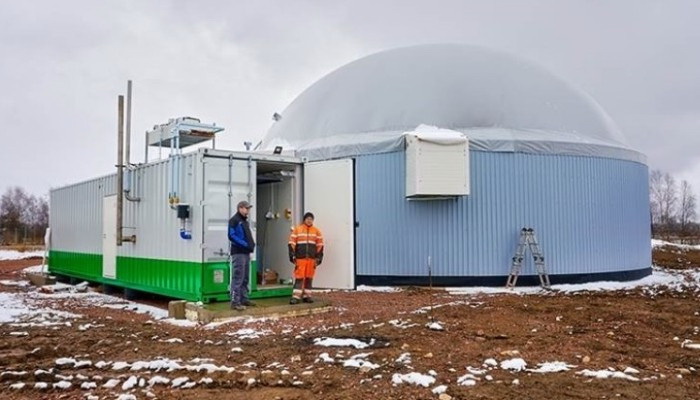 Large-scale animal husbandry in Finland generates some 20 million tonnes of waste annually, the nutrient content of which is currently under-utilised.
Large-scale animal husbandry in Finland generates some 20 million tonnes of waste annually, the nutrient content of which is currently under-utilised.
The government programme calls for the country to harness up to half of the droppings created on farms to be used for bio-fuel production by the year 2025. However so far, there has been little significant progress made towards this goal.
Major dairy producer keen on droppings potential.
Finnish dairy group Valio has taken steps in the direction of the government programme by dipping its toe into the dung-to-energy business.
The company is betting on a pilot plant slated to start up in Nivala, northern Ostrobothnia, and has received three million euros from the Economic Affairs and Employment ministry in support for energy projects. Valio is aiming to develop an extensive ordure treatment network, with the Nivala plant as part of the system.
Valio’s patented process would be suitable for refining raw material from smaller farms as well as large-scale operations. Valio primary production director Juha Nousiainen said that in addition to separating water and biogas from the sludge, the process also yields nitrogen and phosphorous-calcium sediments which can be applied to the soil as fertiliser and are also considered organic.
According to Nousiainen, Valio primarily sees the process as an ecological approach to addressing some of the problems associated with the dairy production chain – but also as a business opportunity.
Cattle sludge runneth over.
Many cattle farmers are finding themselves hemmed in by growing amounts of cattle compost. As cattle farms expand, there is a shortage of arable land to use as the final destination for fertiliser in the form of manure. Additionally, liquid manure is one of the culprits responsible for nitrogen runoffs into water bodies that eventually contribute to high nutrient loads and result in eutrophication.
Nousiainen pointed out that dairy farms generate up to twice as much dung as they do milk. Dairy giant Valio already knows the areas where dung collection will be needed, because the firm covers some 50 million kilometres every year on dairy collection and distribution runs.
Nousiainen said that the company is hoping that the pilot project will help form a broad ecosystem for slurry collection and downstream processing. He said the firm will likely begin approaching potential partners after the summer vacation.
“Dairy farms, technology providers, gas and nutrient users and companies are all welcome. So are researchers, financiers and officials.”
Farmer ahead of the times
Meanwhile Nivala farmer Heikki Junttila has been using manure generated by his cattle to produce energy since the year 2000. For him, what some see as a foul-smelling sludge that’s best avoided, is one of the most precious of raw materials.
Junttila uses methane from the sludge and also utilises ammonia as it transforms, so the process is completely odourless. The progressive farmer said that he wonders why cattle droppings are still not used to their full potential and he charged that the government’s negative attitude hampered his biogas project in its early stages.
Now however, the situation has turned around and Junttila has been enlightening government ministers and other influencers eager to lap up his experiences converting ordure into energy -- many who have visited his farm to marvel at his bioreactor.
The government has recently tabled draft legislation in parliament that would make it easier to use cattle manure for energy production.
First in-human trial of synthetic cornea starts in Israel
 The first-in-human implantation of the revolutionary CorNeat KPro synthetic cornea has been approved for 10 corneally blind patients at Beilinson Hospital in Petah Tikva.
The first-in-human implantation of the revolutionary CorNeat KPro synthetic cornea has been approved for 10 corneally blind patients at Beilinson Hospital in Petah Tikva.
CorNeat KPro was developed by CorNeat Vision of Ra’anana. The implant is designed to replace deformed, scarred or opacified corneas and is expected to fully rehabilitate the vision of corneally blind patients immediately following implantation.
The device’s lens, which provides optical quality equivalent to a perfect cornea, integrates with the patient’s ocular tissue using a unique patented nano-fabric skirt placed under the conjunctiva.
The clinical trial at Beilinson will be led by Dr. Irit Bahar, chief of ophthalmology. Test patients will be people who are not candidates for, or have failed one or more corneal transplantations.
As to Bahar the technology behind this implant, which enables to permanently and bio-mechanically attach synthetic materials to live human tissue, is key in turning the tide on global corneal blindness.
Additional trial sites are planned to open later this year in eight hospitals in Canada, the United States, France, China and the Netherlands.
Researchers build robot scientist that has already discovered a new catalyst
 Researchers at the University of Liverpool have built an intelligent mobile robot scientist that can work 24-7, carrying out experiments by itself. The robot scientist, the first of its kind, makes its own decisions about which chemistry experiments to perform next, and has already discovered a new catalyst. It has humanoid dimensions and works in a standard laboratory, using instruments much like a human researcher does. However, unlike a human, this 400 kg robot has infinite patience, can think in 10 dimensions, and works for 21.5 hours each day, pausing only to recharge its battery.
Researchers at the University of Liverpool have built an intelligent mobile robot scientist that can work 24-7, carrying out experiments by itself. The robot scientist, the first of its kind, makes its own decisions about which chemistry experiments to perform next, and has already discovered a new catalyst. It has humanoid dimensions and works in a standard laboratory, using instruments much like a human researcher does. However, unlike a human, this 400 kg robot has infinite patience, can think in 10 dimensions, and works for 21.5 hours each day, pausing only to recharge its battery.
Robots have been used before in chemistry research, but they are typically hardwired to a specific experiment. This 1.75-meter tall robot is mobile and can roam around the laboratory, performing a wide range of different tasks.
The robot independently carries out all tasks in the experiment such as weighing out solids, dispensing liquids, removing air from the vessel, running the catalytic reaction, and quantifying the reaction products.
The robot's brain uses a search algorithm to navigate a 10-dimensional space of more than 98 million candidate experiments, deciding the best experiment to do next based on the outcomes of the previous ones. By doing this, it autonomously discovered a catalyst that is six times more active, with no additional guidance from the research team.
First hydrogen bus arrives in Wuppertal
 In the German city of Wuppertal, environmentally clean buses have emerged, which run on hydrogen fuel, which emits no emissions other than water vapor, and the fuel forms a waste-burning power plant. 10 buses with hydrogen fuel travel on different routes at the same time. It is planned to double the hydrogen buses in Wuppertal next year. Each bus carries up to 75 passengers.
In the German city of Wuppertal, environmentally clean buses have emerged, which run on hydrogen fuel, which emits no emissions other than water vapor, and the fuel forms a waste-burning power plant. 10 buses with hydrogen fuel travel on different routes at the same time. It is planned to double the hydrogen buses in Wuppertal next year. Each bus carries up to 75 passengers.
In the past, there were energy hotels that ran on emissions. The project was supported by the EU authorities, as well as Germany. If the hydrogen buses are reliable and satisfy the residents, the project will be extended to other European countries.
A train running on hydrogen fuel has been operating in Germany since 2018, and recently "hydrogen" trains have also appeared in the Netherlands. They serve the directions where there are no power lines and replace the "dirty" fuel - locomotives running on fuel oil, diesel or solarium.
Wearable-tech glove translates sign language into speech in real time
 UCLA bioengineers have designed a glove-like device that can translate American Sign Language into English speech in real time though a smartphone app. As to the specialists this opens up an easy way for people who use sign language to communicate directly with non-signers without needing someone else to translate for them and it can help more people learn signlanguage themselves.
UCLA bioengineers have designed a glove-like device that can translate American Sign Language into English speech in real time though a smartphone app. As to the specialists this opens up an easy way for people who use sign language to communicate directly with non-signers without needing someone else to translate for them and it can help more people learn signlanguage themselves.
The system includes a pair of gloves with thin, stretchable sensors that run the length of each of the five fingers. These sensors, made from electrically conducting yarns, pick up hand motions and finger placements that stand for individual letters, numbers, words and phrases.
The device then turns the finger movements into electrical signals, which are sent to a dollar-coin-sized circuit board worn on the wrist. The board transmits those signals wirelessly to a smartphone that translates them into spoken words at the rate of about a one word per second.
The researchers also added adhesive sensors to testers' faces-in between their eyebrows and on one side of their mouths-to capture facial expressions that are a part of American Sign Language.
Previous wearable systems that offered translation from American Sign Language were limited by bulky and heavy device designs or were uncomfortable to wear.
The device developed by the UCLA team is made from lightweight and inexpensive but long-lasting, stretchable polymers. The electronic sensors are also very flexible and inexpensive. In testing the device, the researchers worked with four people who are deaf and use American Sign Language. The wearers repeated each hand gesture 15 times. A custom machine-learning algorithm turned these gestures into the letters, numbers and words they represented. The system recognized 660 signs, including each letter of the alphabet and numbers 0 through 9.
Google expands fact-cheking service to image search
 Google has said it will expand its fact checking policies to its image search feature, as pressure mounts to crack down on misinformation and disinformation.
Google has said it will expand its fact checking policies to its image search feature, as pressure mounts to crack down on misinformation and disinformation.
From today, when a user searches on Google Images, a “Fact Check” label may appear under the thumbnail image results.
Tapping on one of these results will display a summary of the fact check which appears on the underlying web page, if one has been carried out. These labels may appear both for fact check articles about specific images and for fact check articles that include an image in the story.
It fact checking sources are independent from Google itself and rely on ClaimReview, an open method used by publishers to indicate fact check content to search engines.
The service has already been used by the company to show fact-checking labels to US viewers on its video platform YouTube in April in a bid to curb coronavirus misinformation, which has exploded on social media through the pandemic.
Tech companies have been facing calls to police content more aggressively in recent years, after their hands-off approach allowed fake accounts and false claims to become rampant online.
YouTube has surfaced links to sources such as Encyclopedia Britannica and Wikipedia to address common hoaxes since 2018, but said in its April announcement that it would start directing efforts toward more fast-moving news cycles. Shortly after that, it purged the wildly viral “Plandemic” video, which promoted a conspiracy theory about the pandemic to millions of viewers within just a few days.
Twitter and Facebook have also introduced fact-checking programs and warning labels for “manipulated media,” although critics say the moves are too limited in scope.
Apple Watch saves a man's life
 The usual notice forced the man to go to the hospital and undergo a full medical examination. At first, doctors suspected the Apple Watch, but the equipment confirmed that Chris Mint has a shiny arrhythmia. Specialists have discovered that both heart valves need surgery. Doctors also said that Mint may have had a heart attack without the Apple Watch.
The usual notice forced the man to go to the hospital and undergo a full medical examination. At first, doctors suspected the Apple Watch, but the equipment confirmed that Chris Mint has a shiny arrhythmia. Specialists have discovered that both heart valves need surgery. Doctors also said that Mint may have had a heart attack without the Apple Watch.
Artificial brains may need sleep too
 Sleep may be as vital to intelligent machines of the future as it is to us. Credit: Los Alamos National Laboratory.
Sleep may be as vital to intelligent machines of the future as it is to us. Credit: Los Alamos National Laboratory.
No one can say whether androids will dream of electric sheep, but they will almost certainly need periods of rest that offer benefits similar to those that sleep provides to living brains, according to new research from Los Alamos National Laboratory.
Watkins and her research team found that the network simulations became unstable after continuous periods of unsupervised learning. When they exposed the networks to states that are analogous to the waves that living brains experience during sleep, stability was restored.
The discovery came about as the research team worked to develop neural networks that closely approximate how humans and other biological systems learn to see. The group initially struggled with stabilizing simulated neural networks undergoing unsupervised dictionary training, which involves classifying objects without having prior examples to compare them to.
The issue of how to keep learning systems from becoming unstable really only arises when attempting to utilize biologically realistic, spiking neuromorphic processors or when trying to understand biology itself. The vast majority of machine learning, deep learning, and AI researchers never encounter this issue because in the very artificial systems they study they have the luxury of performing global mathematical operations that have the effect of regulating the overall dynamical gain of the system.
The researchers characterize the decision to expose the networks to an artificial analog of sleep as nearly a last ditch effort to stabilize them. They experimented with various types of noise, roughly comparable to the static you might encounter between stations while tuning a radio. The best results came when they used waves of so-called Gaussian noise, which includes a wide range of frequencies and amplitudes. They hypothesize that the noise mimics the input received by biological neurons during slow-wave sleep. The results suggest that slow-wave sleep may act, in part, to ensure that cortical neurons maintain their stability and do not hallucinate.
The groups' next goal is to implement their algorithm on Intel's Loihi neuromorphic chip. They hope allowing Loihi to sleep from time to time will enable it to stably process information from a silicon retina camera in real time. If the findings confirm the need for sleep in artificial brains, we can probably expect the same to be true of androids and other intelligent machines that may come about in the future.
Avoiding bias and misinformation online
 Systems that ease the access to web information and knowledge, come with a variety of different issues.
Systems that ease the access to web information and knowledge, come with a variety of different issues.
The last thirty years have witnessed a technological and cultural revolution related to the notions of information and knowledge generation, sharing, and access. The birth and progressive evolution of the World Wide Web (WWW) have led to the availability of a massive and distributed repository of heterogeneous data and potential information, openly available to everyone. This phenomenon has been further emphasized by the conception and implementation of Web 2.0 technologies, which allow every user to generate content and share it directly with peers through social media, without almost any traditional form of intermediate trusted control.
The availability of an enormous and intangible world of potential answers to a multiplicity of information needs, has motivated a large wealth of research aimed at defining and developing effective and efficient systems capable to timely provide the right information to users, offering them a support for easily finding a path in the intricate forest of the WWW. Among these, search engines and recommender systems constitute nowadays two prominent categories of systems that address these issues. Huge efforts have been made over the last years to improve the performance of these systems, by increasingly accounting for the notion of context and by leveraging the user-systems interactions in an attempt to automatically learn the real user context and dynamically adapt to it.
To this purpose, a wide range of techniques have been exploited, including machine learning and various other techniques falling under the umbrella of Artificial Intelligence. From recent years, search engines can process multimedia contents and capture some elements of the user context to tailor the search outcome to each specific user, thus overcoming the ‘one size fits all’ search paradigm. Moreover, the conversational search paradigm has been introduced to offer users a human-based dialogue interface, which can ease the user-system interaction and provide better, more precise, and more relevant information through dialogues. In the domain of recommender systems, where personalization is a core concept, the role of context has also been recognized and is increasingly considered by the research community.
The idea and foundations of the Semantic Web have promised a further step towards offering a semantic structure to the WWW wealth of data and information. The availability of data and content related to various knowledge domains has motivated several attempts to provide formal languages and technologies for representing (domain-specific) knowledge, as well as for reasoning with it, with the perspective of providing users with structured knowledge representation and management; this offers a means to fill their knowledge gaps with a better automated support. Moreover, on top of the WWW some human-generated resources (such as Wikipedia and linked open data) have made it possible to provide structured content (knowledge) that can be easily accessed, also through more traditional search systems.
However, there are some important issues to be considered when defining systems and models that should ease the access to information and knowledge on the Web. Namely: is the quality of the results provided by the available systems reasonable? Is there a bias in the processes producing the output offered to users? Is it possible to avoid filter bubbles in which users could be immersed as a consequence of personalization processes? Is the intrinsic uncertainty that characterizes the process of formation of information and knowledge adequately modeled?
Over 133 Possible Vaccines in Development
 Over 133 Vaccines Being Developed Worldwide
Over 133 Vaccines Being Developed Worldwide
According to the World Health Organization (WHO), there are 133 possible COVID-19 vaccines being developed around the world. Of that total, 10 vaccines are in clinical trials in the United States, the UK and China. The other 123 are still in pre-clinical evaluation.
The artificial intellect can tell about you from selfie
 Group of researchers have shown ability of an artificial intellect to define type of the person of the person from a selfie.
Group of researchers have shown ability of an artificial intellect to define type of the person of the person from a selfie.
Researchers assume, that this technology can be used for selection of people online from services of acquaintances or help the companies to sell the products adapted for features of clients.
Working with 12 000 volunteers who have filled the questionnaire which subsequently scientists used for creation of a database of personal qualities. In addition to it, participants also have made nearby 31 000 selfie. Photos have been removed in controllable conditions with a neutral look, with good illumination and with absence of a make-up or ornaments.
The questionnaire has been based on the psychological test «Big five». After training of a neural network on the basis of a data the researchers have found out, that it can predict lines of the person on real photos.
Scientists have noticed, that the algorithm did the true conclusion only in 60 % of cases. However, even with such indicators the artificial intellect copes with this problem better, than the person. The estimation of personal qualities of the person strangers occurred less precisely, than AI.
Reebok Reveals Concepts for the Fitness Masks of the Future
 The brand’s design team, in an effort to spark innovation to support the health and wellness of its athletic community, created mock-ups of what a face mask specifically designed for fitness activity could look like. These three “Fitness Mask of the Future” conceptual designs were created in a joint effort with expert analysis including that from Dr. Emily Krauss, clinical assistant professor at Stanford Children’s Orthopedic and Sports Medicine Center. Purely conceptual in nature, the three masks work to combat the main issues that would be caused by wearing a facial covering during exercise like breathability, comfortability and ability to show facial expression. The masks range in concepts from a half mask with a clean panel for breathability and expression, titled the Reebok Sensoral Mask. The Reebok Immersion mask covers the totality of the head with an astronaut-style shield best for running an outdoor activity.
The brand’s design team, in an effort to spark innovation to support the health and wellness of its athletic community, created mock-ups of what a face mask specifically designed for fitness activity could look like. These three “Fitness Mask of the Future” conceptual designs were created in a joint effort with expert analysis including that from Dr. Emily Krauss, clinical assistant professor at Stanford Children’s Orthopedic and Sports Medicine Center. Purely conceptual in nature, the three masks work to combat the main issues that would be caused by wearing a facial covering during exercise like breathability, comfortability and ability to show facial expression. The masks range in concepts from a half mask with a clean panel for breathability and expression, titled the Reebok Sensoral Mask. The Reebok Immersion mask covers the totality of the head with an astronaut-style shield best for running an outdoor activity.
The third design, the Reebok Symbiosis Mask, appears made to fit the contours of your face with ventilating systems for aeration and a more sleek, protective contraception. The concepts go as far as to suggest technological innovations that could connect the wearer such to fitness app integrations and more.
Saliva test to instantly detect coronavirus with lasers
 European photonics scientists are developing an ultrasensitive laser sensor that detects coronavirus at the earliest point of infection from a saliva or nasal swab in minutes.
European photonics scientists are developing an ultrasensitive laser sensor that detects coronavirus at the earliest point of infection from a saliva or nasal swab in minutes.
Responding to the European Commission’s Express Calls to tackle the coronavirus pandemic, photonics scientists are developing a new rapid, non-invasive ‘optical biosensor’ demonstrator that will detect COVID-19 in humans as soon as it is present in the body.
Having already created six working laboratory demonstrators for other applications, the research team says the technology still needs further adaptation and testing but could be available in a year at the latest.
Originally developed to look for bacterial infections or cancer biomarkers, the new ultrasensitive detector uses photonics - technology that manipulates light - to detect infections in patients with a small amount of the virus.
With the ability to diagnose in real time with high specificity from a low concentration sample, the sensor is much more reliable than the coronavirus rapid-test, ‘finger-prick’ kit which detects if a person has had the coronavirus before and has since recovered.
Looking at tiny molecules, the new point-of-care detector examines virus antigens using miniaturised chips - or ‘nanophotonic biosensors’ - from a simple nasal or saliva swab.
Once a sample is prepared and is in place, the device confirms a positive or negative for coronavirus instantaneously. However, allowing for preparation time and analysis, a result - from sample to diagnosis - may take up to 30 minutes.
American scientists discover antibody completely blocking COVID-19
 American scientists from biopharmaceutical company Sorrento Therapeutics have discovered an antibody that, according to their statement completely blocks COVID-19.
American scientists from biopharmaceutical company Sorrento Therapeutics have discovered an antibody that, according to their statement completely blocks COVID-19.
According to the source, experts analyzed billions of antibodies, among which hundreds were revealed that could affect coronavirus. After that, scientists identified a dozen antibodies, and further study showed that one of them - STI-1499 - is able to 100% protect human cells from infection.
Scientists have discovered how long the coronavirus stays in the air after a short conversation
 Talking for a minute at least a thousand micro-droplets of coronavirus infection in the air can last up to 14 minutes.
Talking for a minute at least a thousand micro-droplets of coronavirus infection in the air can last up to 14 minutes.
As a part of the experiment, the researchers asked volunteers to repeat the phrase "stay healthy" for 25 seconds in a closed space. The area was then illuminated with hypersensitive lasers to make air particles accessible and possible to count.
According to the study, a thousand saliva particles are produced per second during high speech. In the closed area, they disappear from sight in 8-14 minutes.
£1.2 billion for the world’s most powerful weather and climate supercomputer
 Predicting severe weather and the impacts of climate change will be faster and more accurate than ever before, thanks to confirmation of £1.2 billion government funding to develop a state-of-the-art supercomputer. Data from this new supercomputer – expected to be the world’s most advanced dedicated to weather and climate – will be used to help more accurately predict storms, select the most suitable locations for flood defences and predict changes to the global climate.The new supercomputer, to be managed by the Met Office, will also be used to help ensure communities can be better prepared for weather disruption.
Predicting severe weather and the impacts of climate change will be faster and more accurate than ever before, thanks to confirmation of £1.2 billion government funding to develop a state-of-the-art supercomputer. Data from this new supercomputer – expected to be the world’s most advanced dedicated to weather and climate – will be used to help more accurately predict storms, select the most suitable locations for flood defences and predict changes to the global climate.The new supercomputer, to be managed by the Met Office, will also be used to help ensure communities can be better prepared for weather disruption.
Bill Gates on how to defeat 'the first modern pandemic'
 Microsoft co-founder Bill Gates discussed the possibility of a viral pandemic in a TED talk five years ago and recently shared his views on the worldwide coronavirus outbreak and why he believes the key to winning the battle is global innovation.
Microsoft co-founder Bill Gates discussed the possibility of a viral pandemic in a TED talk five years ago and recently shared his views on the worldwide coronavirus outbreak and why he believes the key to winning the battle is global innovation.
The damage to health, wealth, and well-being has already been enormous. This is like a world war, except in this case, we're all on the same side. Everyone can work together to learn about the disease and develop tools to fight it. He considers that global innovation is a key to limiting the damage. This includes innovations in testing, treatments, vaccines, and policies to limit the spread while minimizing the damage to economies and well-being.
Continuing the World War II comparison, Gates cited the "amazing amount of innovation" that emerged from that era, including radar, torpedoes and codebreaking. He said he expected the same from the pandemic and he pointed to five categories of innovation: treatments, vaccines, testing, contact tracing and policies for emerging from lockdown orders.
Apple and Google partner on COVID-19 contact tracing technology
 Across the world, governments and health authorities are working together to find solutions to the COVID-19 pandemic, to protect people and get society back up and running. Software developers are contributing by crafting technical tools to help combat the virus and save lives. In this spirit of collaboration, Google and Apple are announcing a joint effort to enable the use of Bluetooth technology to help governments and health agencies reduce the spread of the virus, with user privacy and security central to the design.
Across the world, governments and health authorities are working together to find solutions to the COVID-19 pandemic, to protect people and get society back up and running. Software developers are contributing by crafting technical tools to help combat the virus and save lives. In this spirit of collaboration, Google and Apple are announcing a joint effort to enable the use of Bluetooth technology to help governments and health agencies reduce the spread of the virus, with user privacy and security central to the design.
One country considered "COVID-19" free zone
With no recorded cases of coronavirus and all outstanding tests returning as negative, the Cook Islands government has declared the archipelago a "COVID-19" free zone, DW reported.
The South Pacific island chain with a population of 17,000, is one of the first nations to declare itself such a zone.
In March, when the first cases of this disease were reported in New Zealand, 3,000 km away, restrictions were imposed on the archipelago; but some of them have already been eased.
Air pollution plummets by more than 45% in major European cities
 Air pollution has plummeted by more than 45% compared to 2019 values in some European cities as coronavirus restriction measures have kept people at home.
Air pollution has plummeted by more than 45% compared to 2019 values in some European cities as coronavirus restriction measures have kept people at home.
Paris, for instance, saw nitrogen dioxide levels drop by 54%, according to research that was released by the Royal Netherlands Meteorological Institute (KNMI).
Scientists at the Dutch Institute, using the European Union Copernicus Tropomi instrument, compared nitrogen dioxide concentrations from March 13 until April 13 2020 to those in 2019 during the same period.
They found similar decreases in cities across the bloc, with Madrid, Milan, and Rome reporting a drop of around 45%.
There is a significant margin of error of 15% with regard to these calculations, which can be attributed largely to varying weather conditions and vast fluctuations in the daily rate of nitrogen dioxide. Thus, they calculated an average of concentrations over a 15-day period.
Armenian scientists develop new generation chlorine-free disinfectant
 Scientists at the A.B. Nalbandian Institute of Chemical Physics of the National Academy of Sciences of Armenia have developed a new generation composite disinfectant amid the coronavirus pandemic.
Scientists at the A.B. Nalbandian Institute of Chemical Physics of the National Academy of Sciences of Armenia have developed a new generation composite disinfectant amid the coronavirus pandemic.
Bioxyl-2, is based on active oxygen, does not contain chlorine and is highly effective, as well as environmentally friendly and affordable.
The scientists have also developed the required technology for manufacturing the disinfectant.
According to the academy, the disinfectant has been tested by the Healthcare Ministry and has proven to be highly effective. Technical terms of productions have been affirmed by authorities.
Amid the coronavirus pandemic, the A.B. Nalbandian Institute of Chemical Physics manufactured 1 tons of the disinfectant and donated it to the Ministry of Emergency Situation for preventive measures. The institute is ready to launch mass production.
Researchers develop real-time crop productivity estimation method
 The new real-time crop productivity estimation method uses satellite data, field measurements and camera networks, and aims to offer useful information to farmers and growers.
The new real-time crop productivity estimation method uses satellite data, field measurements and camera networks, and aims to offer useful information to farmers and growers.
University of Illinois (uoI) scientists, with help from members of the Illinois Corn Growers Association, have developed a new method for estimating crop productivity in real time. The research combines field measurements, a unique in-field camera network, and high-resolution, high-frequency satellite data, which aim to provide highly accurate productivity estimates for crops across Illinois and beyond.
“Our ultimate goal is to provide useful information to farmers, especially at the field level or sub-field level. Previously, most available satellite data had coarse spatial and/or temporal resolution, but here we take advantage of new satellite products to estimate leaf area index (LAI), a proxy for crop productivity and grain yield. And we know the satellite estimates are accurate because our ground measurements agree,” said Hyungsuk Kimm, a doctoral student in the Department of Natural Resources and Environmental Sciences (NRES) at UoI and lead author on the study.
Kimm and his colleagues used surface reflectance data, which measures light bouncing off the Earth, from two kinds of satellites to estimate LAI in agricultural fields. Both satellite datasets represented major improvements over older satellite technologies; they can “see” the Earth at a fine scale (three-metre or 30-metre resolution) and both return to the same spot above the planet on a daily basis. Since the satellites do not capture LAI directly, the research team developed two mathematical algorithms to convert surface reflectance into LAI.
While developing the algorithms to estimate LAI, Kimm worked with Illinois farmers to set up cameras in 36 corn fields across the state, providing continuous ground-level monitoring. The images from the cameras provided detailed ground information to refine the satellite-derived estimates of LAI. In the end, the satellite LAI estimates from the two algorithms strongly agreed with Kimm’s “ground-truth” data from the fields. This result reportedly means the algorithms delivered highly accurate, reliable LAI information from space, and could be used to estimate LAI in fields anywhere in the world in real time.
“We are the first to develop scalable, high-temporal, high-resolution LAI data for farmers to use. These methods have been fully validated using an unprecedented camera network for farmland,” said Kaiyu Guan, Assistant Professor in the Department of NRES and Blue Waters Professor at the National Center for Supercomputing Applications.
The satellite method could reportedly detect underperforming fields or segments of fields that could be corrected with targeted management practices such as nutrient management, pesticide application, or other strategies. Guan plans to make real-time data available to farmers in the near future.
How EU funding is changing the face of Latvian innovation
 At the University of Latvia in Riga, the face of innovation is drastically changing.
At the University of Latvia in Riga, the face of innovation is drastically changing.
Experts from the Institute’s Solid State Physics department (ISSP UL) are revolutionising the way in which the field of solid-state physics is carried out and applied.
Not only has it just been upgraded to what their managers claim is the "most advanced" Centre of Excellence for education, research, innovation and technology transfer in the Baltic States, but it is now turning itself away from just academia-focused research towards industry-oriented projects too.
This is all thanks to the European Commission’s Horizon 2020 funding, which is radically transforming how solid-state physics is used in an industrial and commercial manner, under the CAMART2 project. CAMART2 is aimed at upgrading the existing ISSP ULto a new significantly stronger Centre of Excellence. This upgrade will enable the efficient transfer of new materials and technologies into products for commercial and public benefit.
It is also designed to enhance cooperation between business and academics, paving the way for innovation-based economic growth, whilst diminishing the disparities between Latvia and better-performing EU Member States.
Scientists from the ISSP UL have developed a new ceramic compound that helps the human eye to see invisible, damaging, with multiple applications in the medical field or during surgery.
This is just one example of how researchers are paving the way for innovation.
The Institute’s Director has even said that he would like it to be more involved in global challenges, like climate change and healthcare, which for issues like these, as much help as possible is needed.
Survey reveals consumer acceptance and willingness to use blockchain Blockchain is said to still be in its infancy in terms of widespread use, but a survey from FMCG Gurus has indicated a willingness from consumers to integrate it into food supply chains.
Blockchain is said to still be in its infancy in terms of widespread use, but a survey from FMCG Gurus has indicated a willingness from consumers to integrate it into food supply chains.
Blockchain is an example of a distributed ledger technology (DLT) which is ‘distributed’, as opposed to ‘centralised’. The system records data in many places, each of which is owned by the actors within the blockchain, allowing the idea of ‘trust’ and integrity to be improved across the chain.
The research found that 18 percent of consumers across the globe were currently aware of the technology, but when given a definition, a total of 50 percent said that they would be likely to use it to find out more about food, drink and nutritional supplements.
Robotic nurses serve food, medicines to coronavirus patients in Chennai hospital
A hospital in Chennai has brought in robots to serve food and medicines to the coronavirus patients, setting an exemplar on how technology can be put to use in the direst circumstances. The move is aimed at reducing the risk of infection for nurses.
On Friday, Tamil Nadu Health Minister C. Vijayabhaskar visited the Stanley Hospital and checked the functions of 'robotic nurses' deployed in corona wards. He said the robotic nurses can serve food and medicine to COVID-19 patients which would limit the direct contact of doctors/nurses with the patients and reduce the risk of infection.
Earlier this month, a field hospital staffed with 14 robots opened in the Hongshan Sports Center in China's Wuhan where the pandemic began. The robots, supplied by Beijing-based robotics company CloudMinds, can clean and disinfect, deliver medicine to patients and measure their temperature.
In Jaipur, the Sawai Man Singh Government Hospital is conducting a series of trials on a humanoid robot to check if it can be pressed into service for delivering medicines and food to the coronavirus patients.
Here's how smart toilets of the future could protect your health
 It appears that a group of researchers are working on developing a sensor package for your toilet that will turn it into a smart toilet. By smart toilet, we mean a toilet that comes with sensors that have the ability to analyze your poop whenever you go to the toilet, thus allowing you to monitor your health from the comfort of your home.
It appears that a group of researchers are working on developing a sensor package for your toilet that will turn it into a smart toilet. By smart toilet, we mean a toilet that comes with sensors that have the ability to analyze your poop whenever you go to the toilet, thus allowing you to monitor your health from the comfort of your home.
These sensors will be able to check for things like consistency, color, and even glucose levels and red blood cell count. To help protect the user’s privacy, the researchers have proposed using biometric security. This not only involves using fingerprint scanners to authenticate the user, but by also relying on “analprinting”.
This new kind of plastic is made to degrade in seawater At five sites in the world’s oceans, plastic waste accumulates in large swirling gyres, thelargest of which is three times the size of France. Millions of tons of plastic enters the oceans every year, damaging marine ecosystems, harming ocean animals and entering the human food chain.
At five sites in the world’s oceans, plastic waste accumulates in large swirling gyres, thelargest of which is three times the size of France. Millions of tons of plastic enters the oceans every year, damaging marine ecosystems, harming ocean animals and entering the human food chain.
Japanese researchers have developed a new kind of biodegradable plastic that could help. The material is made from starch and cellulose, and could be a step towards a low-cost biodegradable plastic that can be mass-produced.
At the G20 Summit in Osaka last summer, member countries agreed to a framework called Osaka Blue Ocean Vision initiated by Japan, which plans to lead global efforts to reduce ocean plastic pollution to zero by 2050.
Biodegradable plastics, which break down in the environment into smaller harmless chemicals, already exist. But they are not as strong or water-resistant as ubiquitous commercial plastics like polyethylene. They also cost twice as much as petroleum-based plastics, and can also only be produced in small amounts.
Researchers at Osaka University made the new transparent plastic from cellulose and starch. Both are common, cheap natural biological polymers. Starch is found in corn and potatoes, while cellulose is the main component of plant walls. The plastic is a membrane made of starch that is reinforced with tiny, microscopic cellulose fibers. It is strong and does not swell in water. But it breaks down in seawater over time.
Saturn’s secrets revealed by deep learning
PlanetNet algorithm has helped scientists to understand a storm on the giant planet.
A deep-learning method developed by planetary scientists is allowing them to map other worlds. When tested on Saturn, the algorithm uncovered details of a complex atmospheric storm. Ingo Waldmann at University College London and Caitlin Griffith at the University of Arizona in Tucson call their algorithm PlanetNet. It starts by spotting faint patterns in an image, then searches for similar patterns in other images. The researchers fed it pictures, taken by the Cassini spacecraft, of a storm that roiled Saturn’s atmosphere in 2008. In one small picture, PlanetNet quickly picked out features such as ammonia ice clouds. When the scientists extended the analysis to a larger area, PlanetNet revealed that the storm covered a greater area than previously thought. The program also spotted ammonia-rich clouds upwelling around the storm’s centre. Smaller neighbouring storms also showed this upwelling. The algorithm could help scientists to map other planets quickly and accurately, the authors say.
Are We Ready for Quantum Computers?
 A recent paper by Google claiming that a quantum computer performed a specific calculation that would choke even the world’s fastest classical supercomputer has raised many more questions than it answered. Chief among them is this: When full-fledged quantum computers arrive, will we be ready?
A recent paper by Google claiming that a quantum computer performed a specific calculation that would choke even the world’s fastest classical supercomputer has raised many more questions than it answered. Chief among them is this: When full-fledged quantum computers arrive, will we be ready?
Google achieved this milestone against the backdrop of a more sobering reality: Even the best gate-based quantum computers today can only muster around 50 qubits. A qubit, or quantum bit, is the basic piece of information in quantum computing, analogous to a bit in classical computing but so much more.
Gate-based quantum computers operate using logic gates but, in contrast with classical computers, they exploit inherent properties of quantum mechanics such as superposition, interference and entanglement. Current quantum computers are so noisy and error-prone that the information in its quantum state is lost within tens of microseconds through a mechanism called decoherence and through faulty gates.
Still, researchers are making demonstrable, if slow, progress toward more usable qubits. Perhaps in 10 years, or 20, we’ll reach the goal of reliable, large-scale, error-tolerant quantum computers that can solve a wide range of useful problems.
When that day comes, what should we do with them?
We’ve had decades to prepare. In the early 1980s, the American physicist Paul Benioff published a paper demonstrating that a quantum-mechanical model of a Turing machine—a computer—was theoretically possible. Around the same time, Richard Feynman argued that simulating quantum systems at any useful scale on classical computers would always be impossible because the problem would get far, far too big: the required memory and time would increase exponentially with the volume of the quantum system. On a quantum computer, the required resources would scale up far less radically.
Feynman really launched the field of quantum computing when he suggested that the best way to study quantum systems was to simulate them on quantum computers. Simulating quantum physics is the app for quantum computers. They’re not going to be helping you stream video on your smartphone. If large, fault-tolerant quantum computers can be built, they will enable us to probe the strange world of quantum mechanics to unprecedented depths. It follows different rules than the world we observe in our everyday lives and yet underpins everything.
On a big enough quantum computer, we could simulate quantum field theories to study the most fundamental nature of the universe. In chemistry and nanoscale research, where quantum effects dominate, we could investigate the basic properties of materials and design new ones to understand mechanisms such as unconventional superconductivity. We could simulate and understand new chemical reactions and new compounds, which could aid in drug discovery.
By diving deep into mathematics and information theory, we already have developed many theoretical tools to do these things, and the algorithms are farther along than the technology to build the actual machines. It all starts with a theoretical model of the quantum computer, which establishes how it will harness quantum mechanics to perform a useful computation. Researchers write quantum algorithms to perform a task or solve a problem using that model. These are basically a sequence of quantum gates together with a measurement of the quantum state that provides the desired classical information.
Coronavirus infection around the world has led to significant reduction in air pollution levels
 The coronavirus all over the world has led to a significant reduction in air pollution levels, according to European Space Agency satellite photos.
The coronavirus all over the world has led to a significant reduction in air pollution levels, according to European Space Agency satellite photos.
Data from the European Space Agency's satellite show that nitrogen dioxide (NO2) levels in many cities in Asia and Europe have been significantly lower in the last six weeks than in the same period of the last year.
According to Professor Paul Monks this was an important lesson for the future.
One of the biggest declines in pollution can be seen in China's Uhan, where the coronavirus epidemic broke out in January. Hundreds of factories operate in the city of 11 million, supplying automotive parts and other equipment worldwide.
According to NASA, nitrogen dioxide levels in eastern and central China have fallen by 10-30 percent over the past few weeks.
Armenian scientist wins Marie Sklodowska-Curry personal scholarship for the first time in Armenia
 For the first time in Armenia, Armenian scientist, plant geneticist Anna Nebish has won the EU Horizon 2020 Marie Sklodowska-Curry Individual Scholarship. Anna Nebish is involved in grape genetics research at the Institute of Molecular Biology of NAS RA and YSU Chair of Genetics and Oncology. Thanks to this scholarship, Anna Nebish will to discover new genes. New comprehensive studies are planned to be carried out at the Institute of Grape and Wine Research in the Spanish city of Logronio. The results will allow to obtain new varieties of grapes not through the influence of chemicals, but through grape breeding and genetic engineering, which will offer innovative solutions for the development of viticulture and winemaking.
For the first time in Armenia, Armenian scientist, plant geneticist Anna Nebish has won the EU Horizon 2020 Marie Sklodowska-Curry Individual Scholarship. Anna Nebish is involved in grape genetics research at the Institute of Molecular Biology of NAS RA and YSU Chair of Genetics and Oncology. Thanks to this scholarship, Anna Nebish will to discover new genes. New comprehensive studies are planned to be carried out at the Institute of Grape and Wine Research in the Spanish city of Logronio. The results will allow to obtain new varieties of grapes not through the influence of chemicals, but through grape breeding and genetic engineering, which will offer innovative solutions for the development of viticulture and winemaking.
A novel artificial intelligence system that predicts air pollution levels
A team of Loughborough University computer scientists are hoping to help eradicate this fear with a new artificial intelligence (AI) system they have developed that can predict air pollution levels hours in advance.
The technology is novel for a number of reasons, one being that it has the potential to provide new insight into the environmental factors that have significant impacts on air pollution levels.
Professor Qinggang Meng and Dr. Baihua Li are leading the project which is focused on using AI to predict PM2.5—particulate matter of less than 2.5 microns (10-6 m) in diameter—that is often characterized as reduced visibility in cities and hazy-looking air when levels are high.
Particulate matter is a type of air pollutant and it is the pollutant with the strongest evidence for public health concern.
This is because the particles are so small they can easily get into the lungs and then the bloodstream, resulting in cardiovascular, cerebrovascular and respiratory impacts.
There are systems that already exist that can predict PM2.5 but Loughborough University's research looks to take the technology to the next level.
The system the researchers have developed is novel for the following aspects:
- It predicts PM2.5 levels in advance—giving predictions for the levels in one hour to several hours' time, plus 1-2 days ahead
- It interprets the various factors and data used for prediction, which could lead to a better understanding of the weather, seasonal and environmental factors that can impact PM2.5
- It doesn't just predict one figure; it predicts the PM2.5 level plus a range of values the air pollution reading could fall within—known as 'uncertainty analysis'
- It has the capabilities to be used as an air pollution analysis tool in a carbon credit trading system.
The system's uncertainty analysis and ability to understand factors that affect PM2.5 are particularly important as this will allow potential end-users, policymakers and scientists to better understand related causes of PM2.5 and how reliable the prediction is.
Dr. Yuanlin Li is the Research Associate working on the project at Loughborough University. The LU team created the system using machine learning—a type of artificial intelligence technology that uses large amounts of data to learn rules and features, so a system can make predictions.
The researchers used public historical data on air pollution in Beijing to train and test the algorithms; China was selected as the focus as 145 of 161 Chinese cities have serious air pollution problems.
The developed system will now be tested on live data captured by sensors deployed in Shenzhen, China.
The system developed at Loughborough University is part of a wider research project funded by the Newton Fund, which has four partners: Satoshi Systems Ltd, Loughborough University, Shenzhen Institutes of Advanced Technology, and EEG Smart Intelligent Technology in China.
The aim of the project is to explore how carbon can be used as a tradeable commodity to establish a new effective economic leverage for controlling emissions.
It is envisaged that cities, regions and factories will be given credits for how much carbon they can emit and if they go over it must 'buy' more credits. Alternatively, if a location falls under its limit, it can sell the surplus credits on the carbon market for a profit.
The aim is to integrate Loughborough University's PM2.5 prediction model onto an online platform that can be accessed by participants of the carbon trading scheme.
This will allow participants to use the system to access real-time, meaningful information on pollution levels that will aid them with designing a trading strategy.
Magnet-Controlled Bioelectronic Implant Could Relieve Pain
A team of Rice University engineers has introduced the first neural implant that can be both programmed and charged remotely with a magnetic field.
Their breakthrough may make possible imbedded devices like a spinal cord-stimulating unit with a battery-powered magnetic transmitter on a wearable belt.
The integrated microsystem, called MagNI (for magnetoelectric neural implant), incorporates magnetoelectric transducers. These allow the chip to harvest power from an alternating magnetic field outside the body.
The system was developed by Kaiyuan Yang, an assistant professor of electrical and computer engineering; Jacob Robinson, an associate professor of electrical and computer engineering and bioengineering; and co-lead authors Zhanghao Yu, a graduate student, and graduate student Joshua Chen, all at Rice's Brown School of Engineering.
MagNI targets applications that require programmable, electrical stimulation of neurons, for instance to help patients with epilepsy or Parkinson's disease.
"This is the first demonstration that you can use a magnetic field to power an implant and also to program the implant," Yang said. "By integrating magnetoelectric transducers with CMOS (complementary metal-oxide semiconductor) technologies, we provide a bioelectronic platform for many applications. CMOS is powerful, efficient and cheap for sensing and signal processing tasks."
He said MagNI has clear advantages over current stimulation methods, including ultrasound, electromagnetic radiation, inductive coupling and optical technologies.
"People have been demonstrating neural stimulators on this scale, and even smaller," Yang said. "The magnetoelectric effect we use has many benefits over mainstream methods for power and data transfer."
He said tissues do not absorb magnetic fields as they do other types of signals, and will not heat tissues like electromagnetic and optical radiation or inductive coupling. "Ultrasound doesn't have the heating issue but the waves are reflected at interfaces between different mediums, like hair and skin or bones and other muscle."
Because the magnetic field also transmits control signals, Yang said MagNI is also "calibration free and robust."
"It doesn't require any internal voltage or timing reference," he said.
Components of the prototype device sit on a flexible polyimide substrate with only three components: a 2-by-4-millimeter magnetoelectric film that converts the magnetic field to an electric field, a CMOS chip and a capacitor to temporarily store energy.
The team successfully tested the chip's long-term reliability by soaking it in a solution and testing in air and jellylike agar, which emulates the environment of tissues.
The researchers also validated the technology by exciting Hydra vulgaris, a tiny octopuslike creature studied by Robinson's lab. By constraining hydra with the lab's microfluidic devices, they were able to see fluorescent signals associated with contractions in the creatures triggered by contact with the chips. The team is currently performing in-vivo tests of the device on different models.
Charge batteries through skin with permanent implantable device concept
The team ha s developed a way to remotely charge a battery, such as that in a pacemaker, using a soft, biocompatible material that absorbs sound waves passed through the body.
s developed a way to remotely charge a battery, such as that in a pacemaker, using a soft, biocompatible material that absorbs sound waves passed through the body.
Soft and flexible materials can ultrasonically charge bioelectronic implants, which could help to reduce the need for surgical treatment.
Electronic devices are increasingly used to remedy serious and long-term health problems, such as pacemakers to regulate heartbeat, electronic pumps that release insulin, and implantable hearing aids. Key design considerations for these components aim to minimize size and weight for patient comfort, and they ensure that the device is not toxic to the body.
Another stumbling block is how to power the devices. Batteries keep them working for a while, but changing the batteries demands invasive surgery. Ideally, the power source needs to be recharged wirelessly.
Avoiding bias and misinformation online
 The last thirty years have witnessed a technological and cultural revolution related to the notions of information and knowledge generation, sharing, and access. The birth and progressive evolution of the World Wide Web (WWW) have led to the availability of a massive and distributed repository of heterogeneous data and potential information, openly available to everyone. This phenomenon has been further emphasised by the conception and implementation of Web 2.0 technologies, which allow every user to generate content and share it directly with peers through social media, without almost any traditional form of intermediate trusted control.
The last thirty years have witnessed a technological and cultural revolution related to the notions of information and knowledge generation, sharing, and access. The birth and progressive evolution of the World Wide Web (WWW) have led to the availability of a massive and distributed repository of heterogeneous data and potential information, openly available to everyone. This phenomenon has been further emphasised by the conception and implementation of Web 2.0 technologies, which allow every user to generate content and share it directly with peers through social media, without almost any traditional form of intermediate trusted control.
The availability of an enormous and intangible world of potential answers to a multiplicity of information needs, has motivated a large wealth of research aimed at defining and developing effective and efficient systems capable to timely provide the right information to users, offering them a support for easily finding a path in the intricate forest of the WWW. Among these, search engines and recommender systems constitute nowadays two prominent categories of systems that address these issues. Huge efforts have been made over the last years to improve the performance of these systems, by increasingly accounting for the notion of context and by leveraging the user-systems interactions in an attempt to automatically learn the real user context and dynamically adapt to it.
To this purpose, a wide range of techniques have been exploited, including machine learning and various other techniques falling under the umbrella of Artificial Intelligence. From recent years, search engines can process multimedia contents and capture some elements of the user context to tailor the search outcome to each specific user, thus overcoming the ‘one size fits all’ search paradigm. Moreover, the conversational search paradigm has been introduced to offer users a human-based dialogue interface, which can ease the user-system interaction and provide better, more precise, and more relevant information through dialogues. In the domain of recommender systems, where personalisation is a core concept, the role of context has also been recognised and is increasingly considered by the research community.
The idea and foundations of the Semantic Web have promised a further step towards offering a semantic structure to the WWW wealth of data and information. The availability of data and content related to various knowledge domains has motivated several attempts to provide formal languages and technologies for representing (domain-specific) knowledge, as well as for reasoning with it, with the perspective of providing users with structured knowledge representation and management; this offers a means to fill their knowledge gaps with a better automated support. Moreover, on top of the WWW some human-generated resources (such as Wikipedia and linked open data) have made it possible to provide structured content (knowledge) that can be easily accessed, also through more traditional search systems.
Xiaomi Gets Patent for Smart Masks
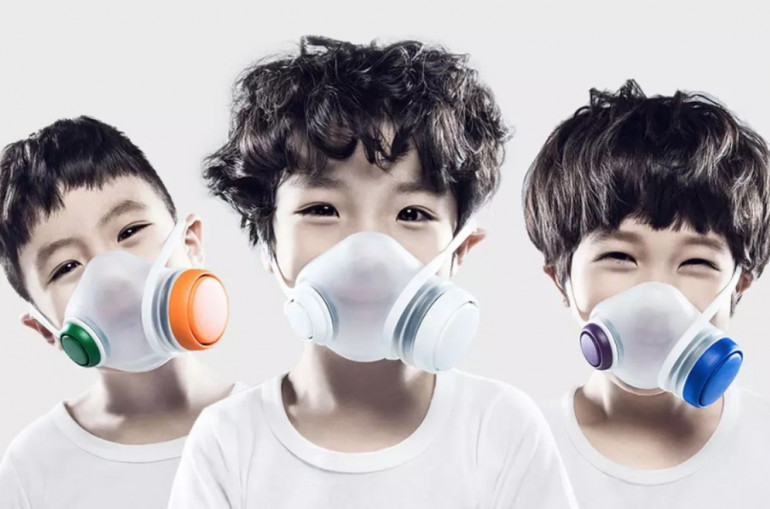 Chinese company Xiaomi has been granted a patent for smart masks that would come equipped with sensors and a chip to gather real-time data collection about the air you breathe. The sensor would record data such as total wearing time, pollution absorption, breathing volume and breath counts. The design consists of a pollutant filter and a sensor that records how long a person has been wearing the mask.
Chinese company Xiaomi has been granted a patent for smart masks that would come equipped with sensors and a chip to gather real-time data collection about the air you breathe. The sensor would record data such as total wearing time, pollution absorption, breathing volume and breath counts. The design consists of a pollutant filter and a sensor that records how long a person has been wearing the mask.
According to a report on the Abacus website, the US Patent and Trademark Office has granted Xiaomi the patent for a "smart mask" design that was filed in June 2016. There is also a built-in battery that powers the standard air filter. The smart mask will also come with sensors like accelerometers and gyroscopes.
The collected data will be stored on the mask using the storage module and can also be transferred to other devices, thanks to the connection module. Xiaomi already sells generic masks to ward off air pollution.
Scientists Invent Device to Generate Electricity From Rain
 A team of engineers has figured out how to take a single drop of rain and use it to generate a powerful flash of electricity.
A team of engineers has figured out how to take a single drop of rain and use it to generate a powerful flash of electricity.
The City University of Hong Kong researchers behind the device, which they’re calling a droplet-based electricity generator (DEG) say that a single rain droplet can briefly generate 140 volts. That was enough to briefly power 100 small lightbulbs and, while it’s not yet practical enough for everyday use, it’s a promising step toward a new form of renewable electricity.
The material the device is made from contains a quasi-permanent electrical charge, and the rain is merely what triggers the flow of energy.
A New Facility Is Set to Produce Oxygen From Moon Dust
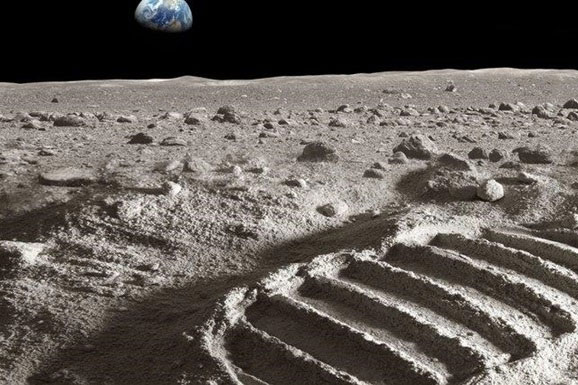 Although the Moon has no atmosphere, it has loads of oxygen, all mixed up with the dust on the lunar surface in the form of oxides.
Although the Moon has no atmosphere, it has loads of oxygen, all mixed up with the dust on the lunar surface in the form of oxides.
Last year, scientists published a paper on how to extract it from a Moon dust (regolith) simulant; now, the first prototype oxygen plant is going to be attempting that extraction on a larger scale.
The facility, set up at the European Space Agency's European Space Research and Technology Centre in the Netherlands, will use the technique developed by Lomax and her colleagues.
We know, based on returned samples of lunar regolith - the loose dust, rocks and dirt on the surface of the Moon - that oxygen is actually really abundant in this material. Between 40 and 45 percent of the regolith by weight is oxygen.
Using an exact copy of lunar regolith made on Earth called lunar regolith simulant, attempts have been made in the past to figure out how to extract the oxygen, with poor results - too complicated, too low-yield, or destructive of the regolith.
"Elixir of immortality" found in central China's ancient tomb
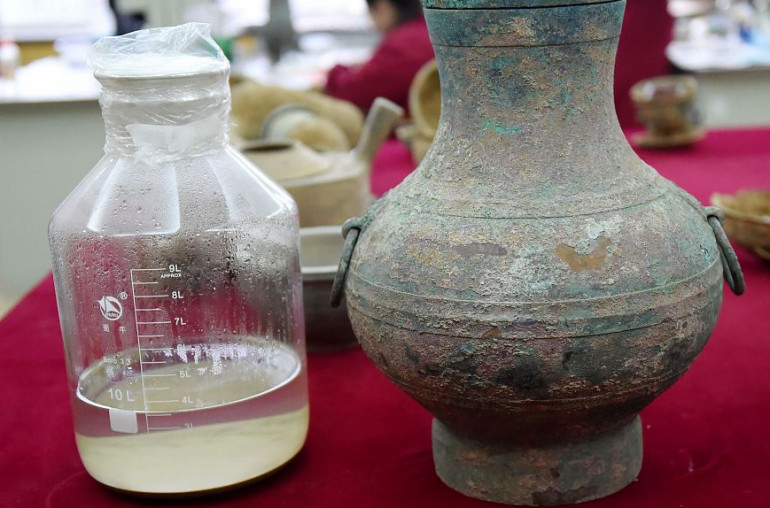 Archaeologists in central China's Henan Province said Friday that the liquid found in a bronze pot unearthed from a Western Han Dynasty (202 BC-8 AD) tomb is an "elixir of life" recorded in ancient Taoist literature.
Archaeologists in central China's Henan Province said Friday that the liquid found in a bronze pot unearthed from a Western Han Dynasty (202 BC-8 AD) tomb is an "elixir of life" recorded in ancient Taoist literature.
About 3.5 liters of the liquid was excavated from the tomb of a noble family in the city of Luoyang last October. It was initially judged by archaeologists to be liquor as it gave off an alcohol aroma.
However, further lab research found that the liquid is mainly made up of potassium nitrate and alunite, the main ingredients of an immortality medicine mentioned in an ancient Taoist text, according to Pan Fusheng, leading archaeologist of the excavation project.
A large number of color-painted clay pots, jadeware and bronze artifacts were also unearthed from the tomb, which covers 210 square meters. The remains of the tomb occupant have also been preserved.
How are robots contributing to the fight against coronavirus?
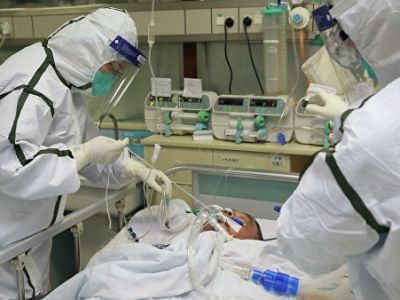 Coronavirus has now reached more than 20 countries. The disease has yet to be declared a pandemic but the medtech industry is already stepping up with solutions to contain its spread. What Using a robot equipped with a camera, microphone and stethoscope, the patient has been able to consult with clinicians without coming into direct contact with them.
Coronavirus has now reached more than 20 countries. The disease has yet to be declared a pandemic but the medtech industry is already stepping up with solutions to contain its spread. What Using a robot equipped with a camera, microphone and stethoscope, the patient has been able to consult with clinicians without coming into direct contact with them.
Providence Regional Medical Center chief of infectious diseases Dr George Diaz told “The nursing staff in the room move the robot around so we can see the patient in the screen, talk to him.”
This isn’t the only robot that’s being used to interact with quarantined people. A hotel in Hangzhou is being used to isolate more than 300 people suspected to have the virus, and has been using a robot to deliver food to their bedrooms. The hotel guests were on the same flight as travellers from Wuhan, and will remain in the hotel for two weeks as a precautionary measure. Multiple food delivery robots have been deployed on all 16 stories of the hotel.
Likewise in Guangzhou City, at the Guangdong Provincial People’s Hospital, autonomous delivery robots are being used to transport drugs around the hospital. The robots are loaded up with medicines and given instructions of where in the hospital to go to, and then head to their destination unaided. They’re able to open and close doors and take the lift without any human assistance.
One robot is able to carry out the delivery tasks of three people, making the entire drug delivery process faster and reducing the risk of clinical staff contracting 2019-nCoV and spreading it throughout the hospital.
Hong Kong scientists have developed a rapid coronavirus diagnostic device
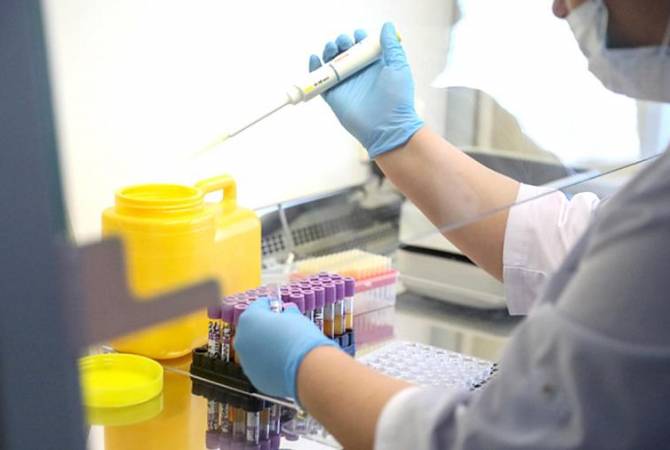 Hong Kong scientists have developed a portable device that can quickly and effectively diagnose a new coronavirus infection in 2019-nCoV in just 40 minutes. The device has already begun to be used in a number of cities in China, including Hubei, which is in the center of the epidemic. "We have sent it to many places and hope that people will use it," said Ven Veitszyan from the Hong Kong University of Science and Technology, who analyzes samples of the organism's liquid effluents. Earlier this same group of Hong Kong researchers produced similar devices for the rapid diagnosis of bird flu and swine flu.
Hong Kong scientists have developed a portable device that can quickly and effectively diagnose a new coronavirus infection in 2019-nCoV in just 40 minutes. The device has already begun to be used in a number of cities in China, including Hubei, which is in the center of the epidemic. "We have sent it to many places and hope that people will use it," said Ven Veitszyan from the Hong Kong University of Science and Technology, who analyzes samples of the organism's liquid effluents. Earlier this same group of Hong Kong researchers produced similar devices for the rapid diagnosis of bird flu and swine flu.
Mismanaged waste 'kills up to a million people a year globally
 Mismanaged waste is causing hundreds of thousands of people to die each year in the developing world from easily preventable causes, and plastic waste is adding a new and dangerous dimension to the problem. Municipal waste frequently goes uncollected in poorer countries and its buildup fuels the spread of disease. Between 400,000 and 1 million people are dying as a result of such mismanaged waste, according to the charity Tearfund.
Mismanaged waste is causing hundreds of thousands of people to die each year in the developing world from easily preventable causes, and plastic waste is adding a new and dangerous dimension to the problem. Municipal waste frequently goes uncollected in poorer countries and its buildup fuels the spread of disease. Between 400,000 and 1 million people are dying as a result of such mismanaged waste, according to the charity Tearfund.
While mismanaged waste has been a problem for decades, the growth of plastic pollution, , which does not break down in the environment, is adding a fresh set of problems to an already dire situation. Plastic waste is blocking waterways and causing flooding, which in turn spreads waterborne diseases. When people burn the waste to get rid of it, it releases harmful toxins and causes air pollution.
Every second, a double-decker busload of plastic waste is burned or dumped in developing countries, the report found. When some plastics deteriorate, they can leach harmful chemicals into the environment and break down into microplastics, with effects that are still poorly understood and largely undocumented in poorer countries.
Can artificial intelligence be taught how to joke?
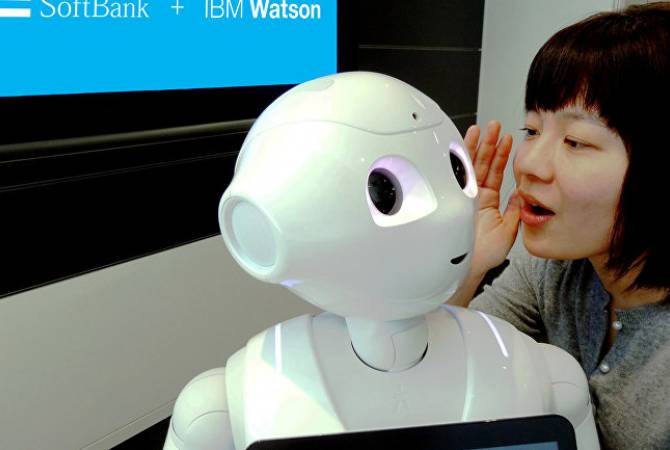 Lately, machines have been proving themselves as good as or even superior to people with certain tasks: they are already better in Go, Chess, and even Dota 2. Algorithms compose music and write poetry. Scientists and entrepreneurs estimate that artificial intelligence will greatly surpass human beings in the future.
Lately, machines have been proving themselves as good as or even superior to people with certain tasks: they are already better in Go, Chess, and even Dota 2. Algorithms compose music and write poetry. Scientists and entrepreneurs estimate that artificial intelligence will greatly surpass human beings in the future.
A large part of what makes us human is our humor, and even though it’s believed that only humans can crack jokes, many scientists, engineers, and even regular people wonder: is it possible to teach AI how to joke?
Compared to composing music, it’s hard to describe what makes us laugh. Sometimes, we can hardly explain what exactly amuses us and why. Many researchers believe that a sense of humor is one of the last frontiers artificial intelligence needs to conquer to truly match human beings. Research shows us that a sense of humor started developing long ago in people in the course of mate selection.
This can be explained by the direct correlation between intellect and a sense of humor. Even today, someone’s sense of humor can show us the level of their intellect. The ability to joke requires such difficult skills as language proficiency and a keen range of vision. In fact, a good command of language is especially important for certain individual pools of humor (British, for example) based primarily on word play. All in all, teaching artificial intelligence how to joke is no easy task. Researchers from around the world are trying to teach artificial intelligence how to make jokes.
Software company founded by US-Armenian businessman secures $30m in venture capital giving product away
 Evolution Media, the investment arm of the well-known and influential Creative Artists Agency (CAA), has made a $30 million investment in Epic!, a consumer-facing, five-year-old education technology company.
Evolution Media, the investment arm of the well-known and influential Creative Artists Agency (CAA), has made a $30 million investment in Epic!, a consumer-facing, five-year-old education technology company.
Epic! is a digital reading platform, an online library of sorts, for kids 12 and under. It boasts more than 35,000 books, audio books and videos from 250 publishers including big brand names such as Sesame Street and National Geographic.
And while the company is unquestionably consumer-oriented, selling a subscription service for $7.99 a month for unlimited access, Epic! gives the service away to teachers and schools. Making it free at school, for schools, definitely increased brand awareness, said Suren Markosian, co-founder and CEO. “Early on we knew that teachers using it, adapting it was important. And they are our most active audiences,” he said.
AUA and PicsArt announce the launch of the AI Lab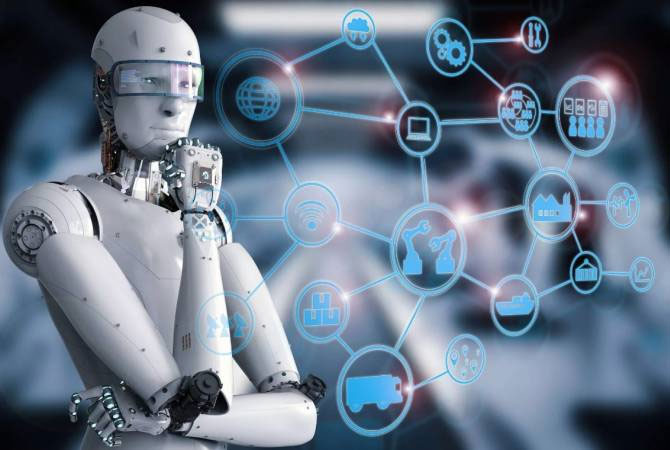 The American University of Armenia (AUA) and PicsArt have announced the collaborative launch of an Artificial Intelligence (AI) Lab that will employ faculty and students to conduct cutting-edge research in machine learning and computer vision. This offers AUA students the unique opportunity to gain research experience in addition to applied software engineering skills greatly valued by companies in the IT field. AUA and PicsArt have been working together to create a new model that will promote science and research while growing academic and professional capacity in the domain of AI.
The American University of Armenia (AUA) and PicsArt have announced the collaborative launch of an Artificial Intelligence (AI) Lab that will employ faculty and students to conduct cutting-edge research in machine learning and computer vision. This offers AUA students the unique opportunity to gain research experience in addition to applied software engineering skills greatly valued by companies in the IT field. AUA and PicsArt have been working together to create a new model that will promote science and research while growing academic and professional capacity in the domain of AI.
“Artificial Intelligence is quickly evolving all over the world and I think it is the right time to set the scene here, in Armenia. We are very happy to launch the AI Lab in collaboration with PicsArt to enhance research in the field of AI. I am anticipating to see how this new initiative will take us a step forward into a center of excellence and surprise other countries,” noted AUA President Dr. Karin Markides. The AI Lab will employ two members of the AUA faculty, lead researchers, and about 15 undergraduate students from AUA’s Akian College of Science and Engineering (CSE) majoring in computer and data science. The students will be trained to conduct both applied and fundamental research in machine learning and computer vision. AUA professors and machine learning professionals from PicsArt will begin training in January 2020. After a six-week training course, the best performing students will be hired by the AI Lab. “I am really excited about this project for three main reasons: my background in AI, deep connection to AUA, and prospects for Armenia. PicsArt is all about making awesome and I hope that together with AUA we can make AI awesome in Armenia. I believe this is just the first step of our collaboration and we can do much more together,” noted Hovhannes Avoyan (M PSIA ’95), Founder of PicsArt Inc. and AUA Corporation Trustee. PicsArt believes in the potential of the AUA students and is excited to provide engineering students with the opportunity for continuous learning in an academic environment, while also solving real-world challenges, based on real data and collaboration with industry experts. As AI is a fast-growing domain, it is extremely important that undergraduates studying in this or other related fields get a high-quality education and gain advanced research skills that will make them competitive in the job market. The new AI Lab will allow students to explore immense opportunities in research; learn how to experiment with cutting-edge tools and technologies; receive advanced tailored training and mentorship from local and international faculty and industry experts. They will be able to apply their knowledge to real big data sets, and offer solutions for a globally leading application. The students will also get competitive compensation for work that enriches, deepens, and accelerates their learning experience at AUA. Both PicsArt and AUA believe there is immense untapped potential for collaboration between academia and industry. The AI Lab is one example of innovative models and processes that will increase mutual trust and greatly contribute to the value generation and human talent capacity development.
Russia, Japan join hands for lunar robot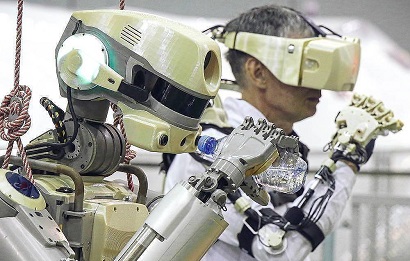 Russian and Japanese companies are planning to jointly design a robot to operate on the lunar surface next year.
Russian and Japanese companies are planning to jointly design a robot to operate on the lunar surface next year.
Russia's Tass News Agency reported that Android Technology Company from Russia and Japan's GITAI reached a tentative agreement when the Japanese company's representatives visited Russia last week.
"Colleagues from Japan are thinking in approximately the same direction as we do, eyeing step-by-step design of robotic systems to explore the near and far space," said Yevgeny Dudorov, executive director of Android Technology.
"We both identify the moon-or, in other words, robotic systems that could function and perform tasks on the moon surface-as our primary target," he said.
According to Dudorov, GITAI specializes in anthropomorphic robots and uses controllers similar to those developed by Android Technology.
The device allows one to operate robots in the "avatar" mode, during which it would mimic the actions of a human controller to perform certain manipulations.
"We will sign a cooperation agreement. Later, we will outline joint plans for 2020, 2021 and later," Dudorov said, adding that the deal with Japan would be signed soon.
Mass balance of the Greenland Ice Sheet from 1992 to 2018 In recent decades, the Greenland Ice Sheet has been a major contributor to global sea-level rise1,2, and it is expected to be so in the future. Although increases in glacier flow 4–6 and surface melting 7–9 have been driven by oceanic 10–12 and atmospheric 13,14 warming, the degree and trajectory of today’s imbalance remain uncertain. Here we compare and combine 26 individual satellite measurements of changes in the ice sheet’s volume, flow and gravitational potential to produce a reconciled estimate of its mass balance. Although the ice sheet was close to a state of balance in the 1990s, annual losses have risen since then, peaking at 335 ± 62 billion tonnes per year in 2011. In all, Greenland lost 3,800 ± 339 billion tonnes of ice between 1992 and 2018, causing the mean sea level to rise by 10.6 ± 0.9 millimetres. Using three regional climate models, we show that reduced surface mass balance has driven 1,971 ± 555 billion tonnes (52%) of the ice loss owing to increased meltwater runoff. The remaining 1,827 ± 538 billion tonnes (48%) of ice loss was due to increased glacier discharge, which rose from 41 ± 37 billion tonnes per year in the 1990s to 87 ± 25 billion tonnes per year since then. Between 2013 and 2017, the total rate of ice loss slowed to 217 ± 32 billion tonnes per year, on average, as atmospheric circulation favoured cooler conditions 15 and as ocean temperatures fell at the terminus of Jakobshavn Isbræ16. Cumulative ice losses from Greenland as a whole have been close to the IPCC’s predicted rates for their high-end climate warming scenario17, which forecast an additional 50 to 120 millimetres of global sea-leve l rise by 2100 when compared to their central estimate.
In recent decades, the Greenland Ice Sheet has been a major contributor to global sea-level rise1,2, and it is expected to be so in the future. Although increases in glacier flow 4–6 and surface melting 7–9 have been driven by oceanic 10–12 and atmospheric 13,14 warming, the degree and trajectory of today’s imbalance remain uncertain. Here we compare and combine 26 individual satellite measurements of changes in the ice sheet’s volume, flow and gravitational potential to produce a reconciled estimate of its mass balance. Although the ice sheet was close to a state of balance in the 1990s, annual losses have risen since then, peaking at 335 ± 62 billion tonnes per year in 2011. In all, Greenland lost 3,800 ± 339 billion tonnes of ice between 1992 and 2018, causing the mean sea level to rise by 10.6 ± 0.9 millimetres. Using three regional climate models, we show that reduced surface mass balance has driven 1,971 ± 555 billion tonnes (52%) of the ice loss owing to increased meltwater runoff. The remaining 1,827 ± 538 billion tonnes (48%) of ice loss was due to increased glacier discharge, which rose from 41 ± 37 billion tonnes per year in the 1990s to 87 ± 25 billion tonnes per year since then. Between 2013 and 2017, the total rate of ice loss slowed to 217 ± 32 billion tonnes per year, on average, as atmospheric circulation favoured cooler conditions 15 and as ocean temperatures fell at the terminus of Jakobshavn Isbræ16. Cumulative ice losses from Greenland as a whole have been close to the IPCC’s predicted rates for their high-end climate warming scenario17, which forecast an additional 50 to 120 millimetres of global sea-leve l rise by 2100 when compared to their central estimate.
AI genome scanner says Denisovans could live until 38 years old Artificial intelligence may be able to estimate the maximum lifespans of extinct species and early humans. The technique relies on analysing specific regions of DNA that are linked to ageing.
Artificial intelligence may be able to estimate the maximum lifespans of extinct species and early humans. The technique relies on analysing specific regions of DNA that are linked to ageing.
Benjamin Mayne at the Commonwealth Scientific and Industrial Research Organisation (CSIRO) in Australia and his colleagues built an AI to predict the lifespan of different animals. To do this, they first trained an AI on the known genomes of 252 species from five classes of animals, including mammals, reptiles and fish, and their maximum lifespans.
The AI then narrowed down almost 30,000 DNA regions to just 42 that related to lifespan. These were then used to create a formula that can convert them into a prediction of maximum lifespan.
The researchers tested the AI on some extinct species. It estimated that the woolly mammoth could live for up to 60 years and Denisovans, a mysterious extinct cousin of modern humans, could live for about 38 years.
The researchers also found that Pinta Island tortoises could live to be 120 years old. Lonesome George, the last known individual of the species, is estimated to have been more than 100 at death. And the oldest bowhead whale is thought to have lived to 211, but the model predicts the species could live to 268.
Ocean temperature reaches record high
The temperature of oceans hit a record high in 2019, the fifth consecutive year of reaching a record, according to a study published in Advances in Atmospheric Sciences. "The upward trend is relentless, and so we can say with confidence that most of the warming is man-made climate change," says Kevin Trenberth, a scientist at the National Center for Atmospheric Research.



